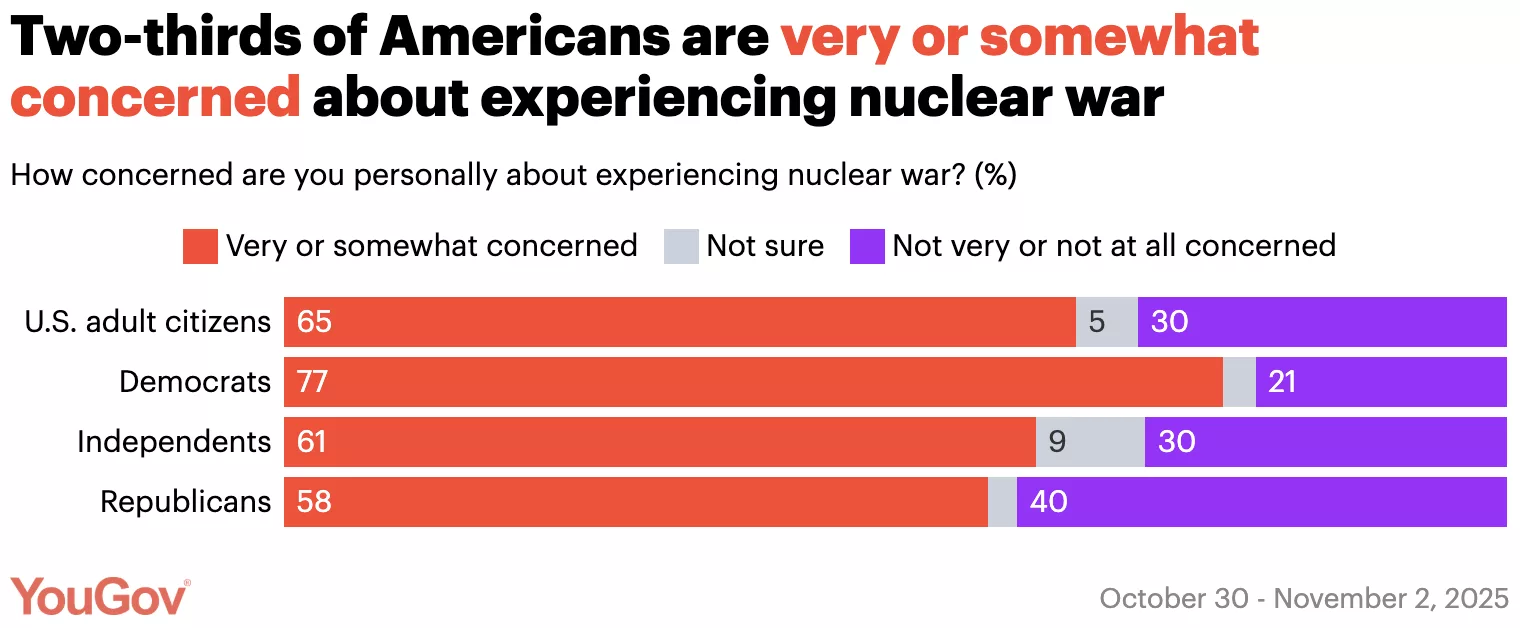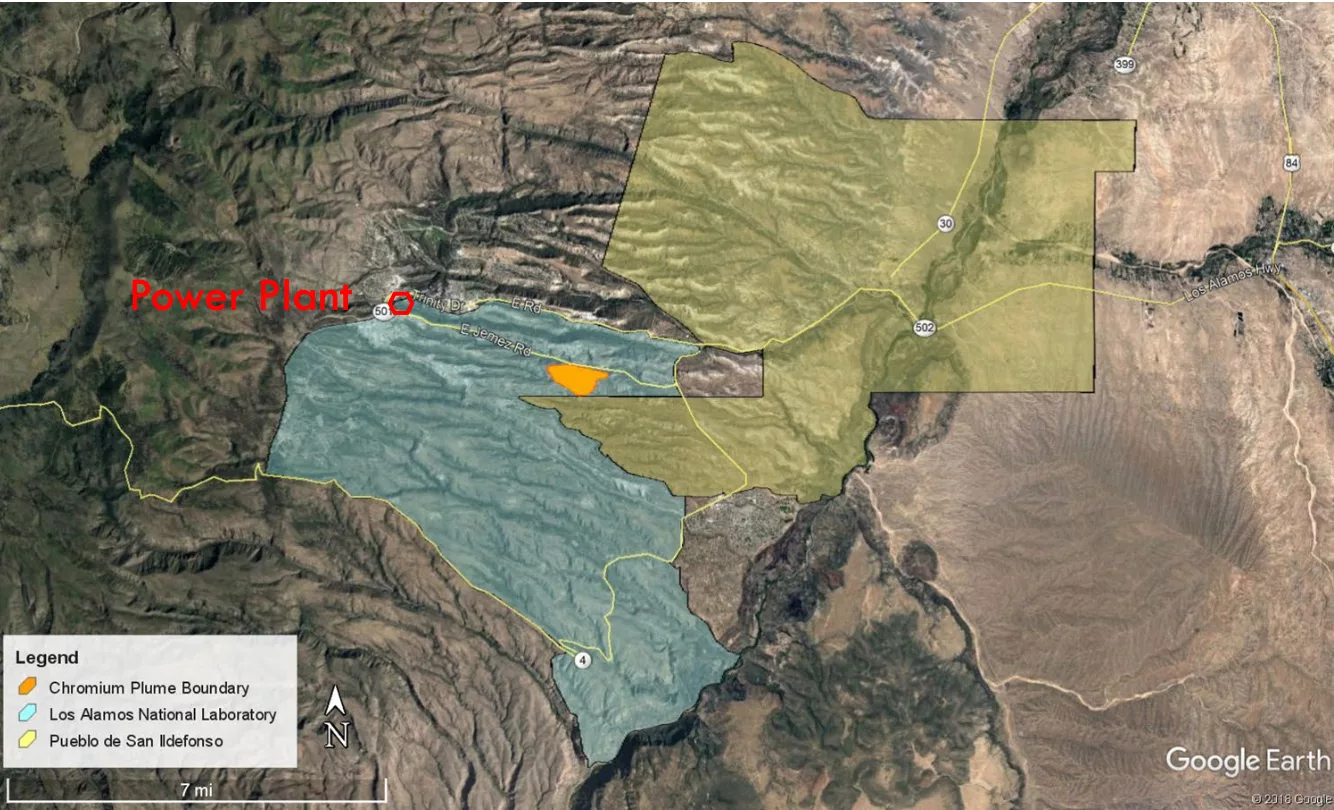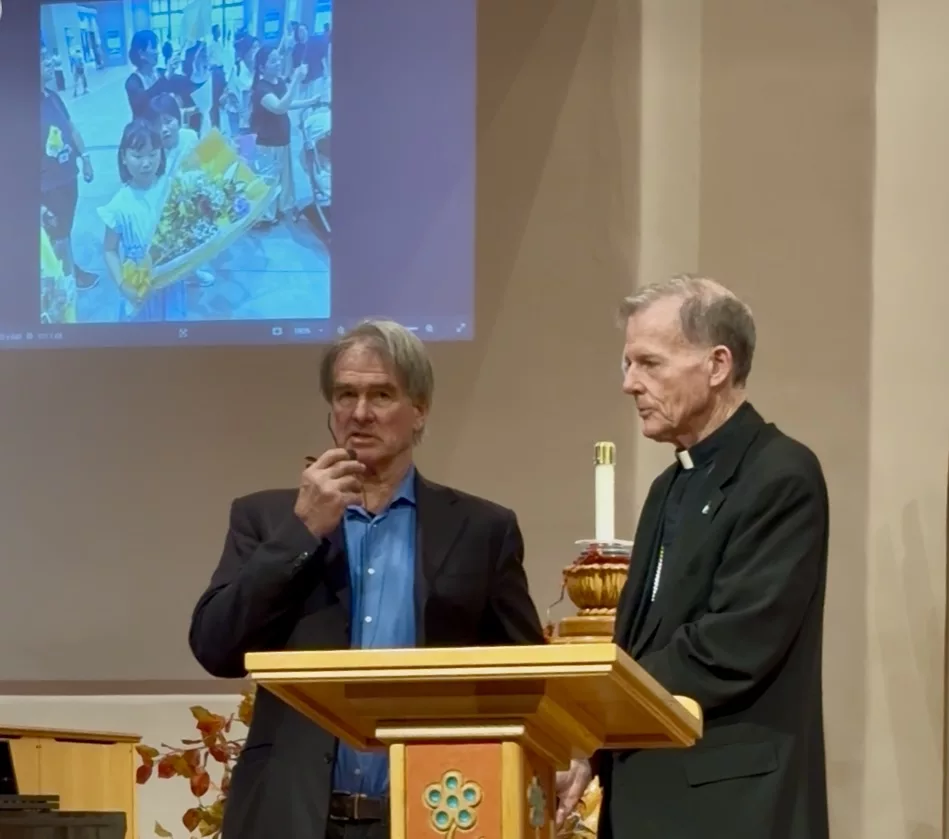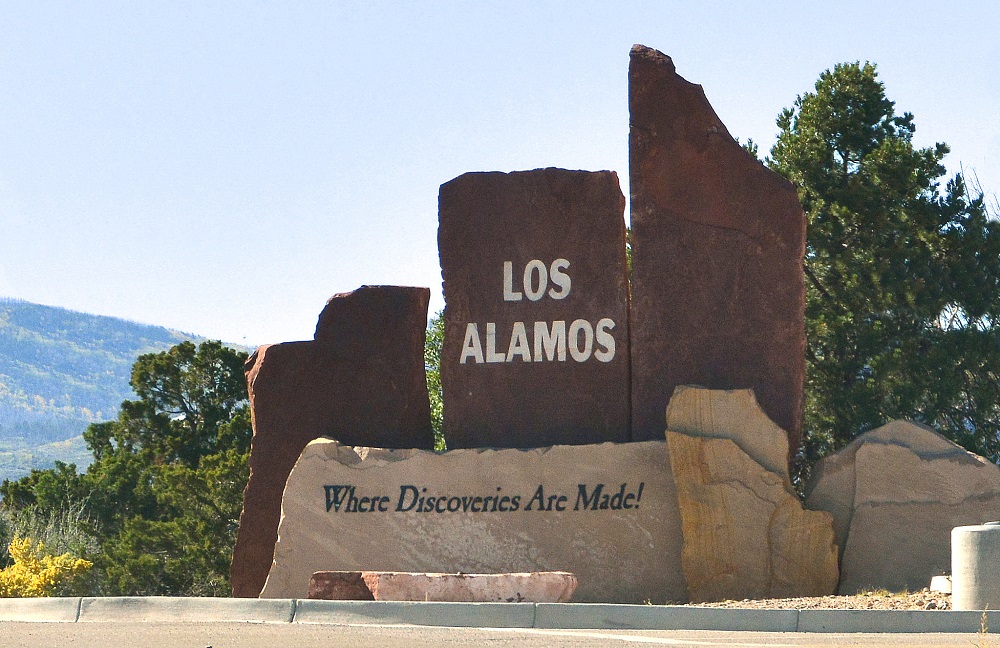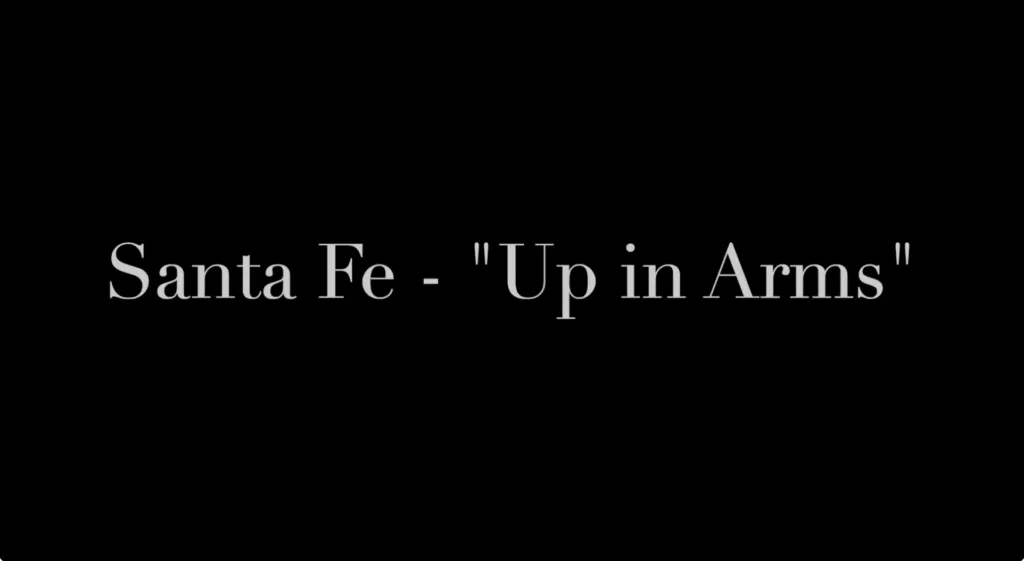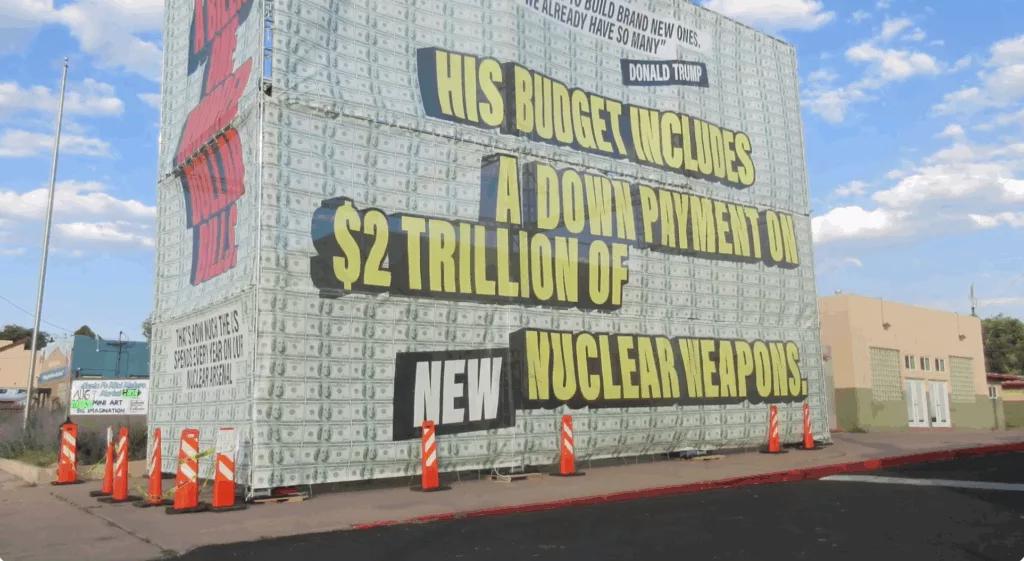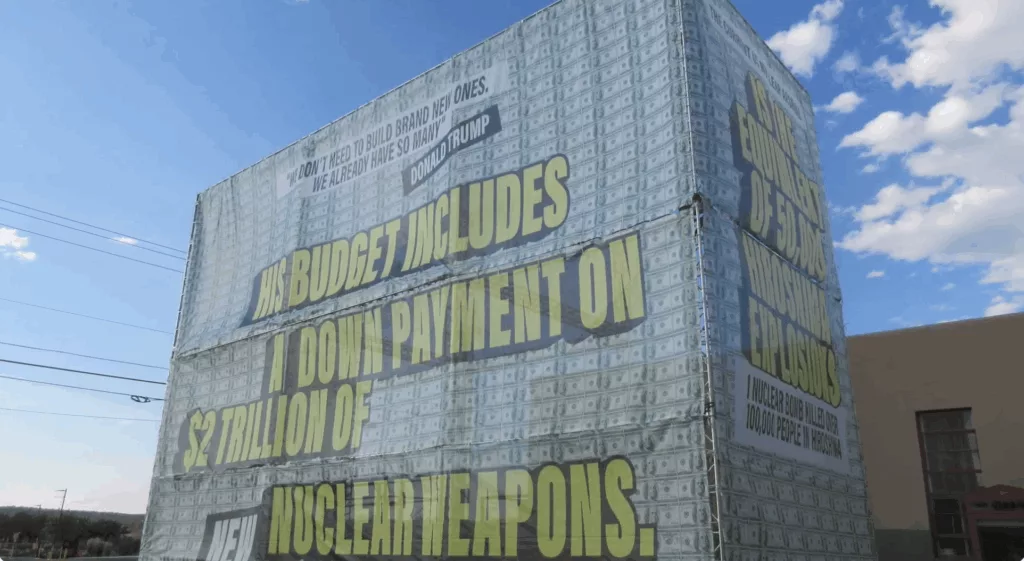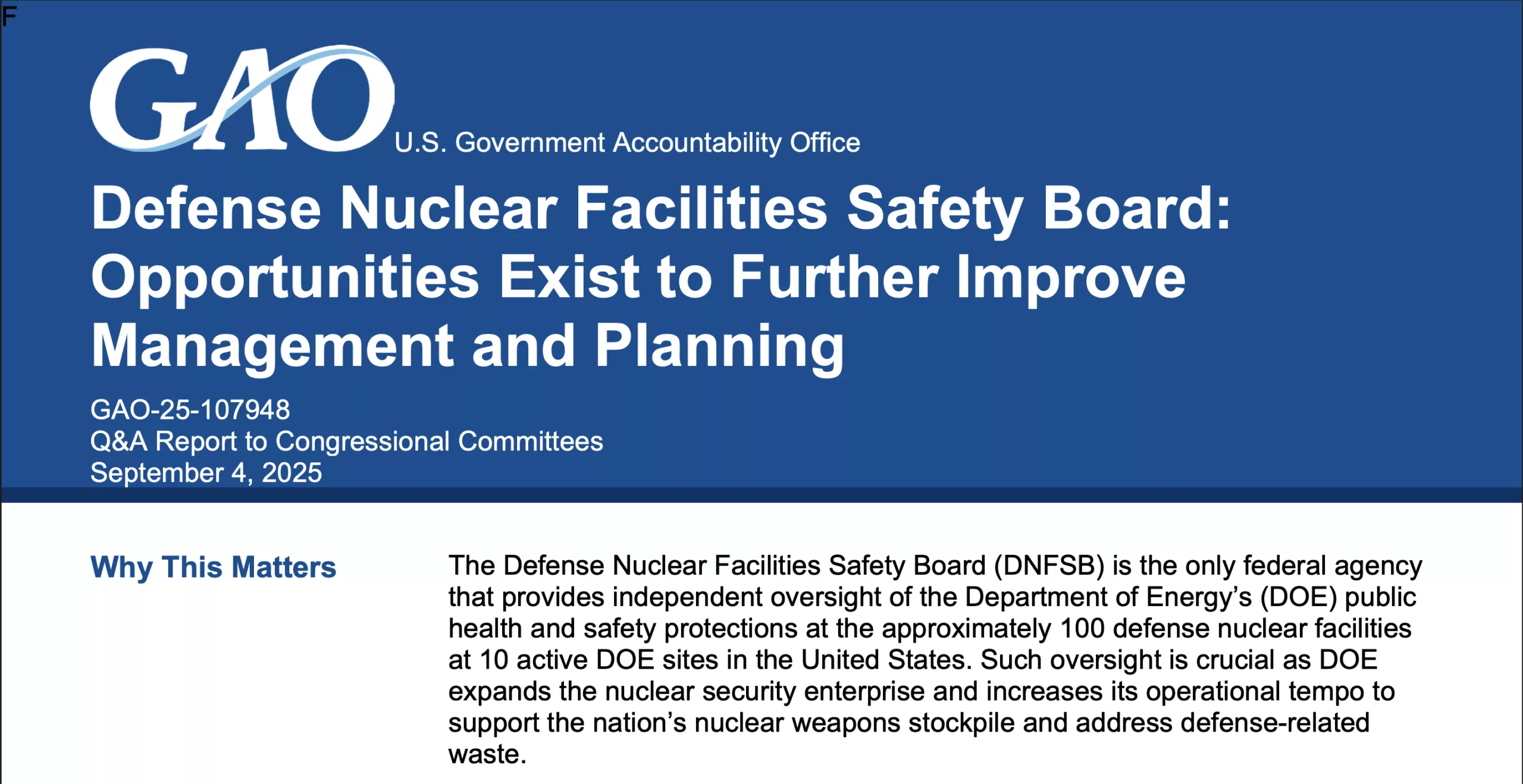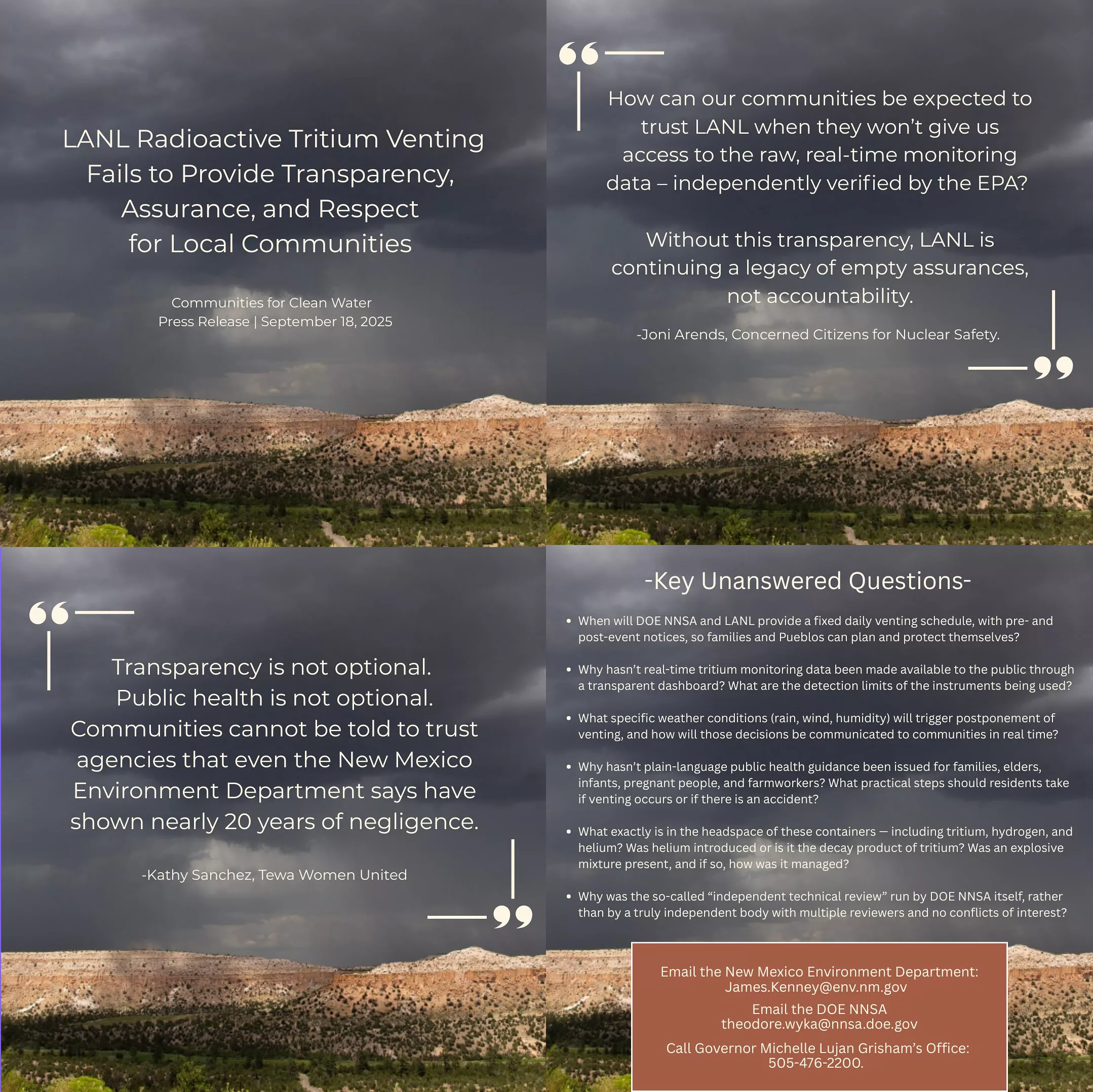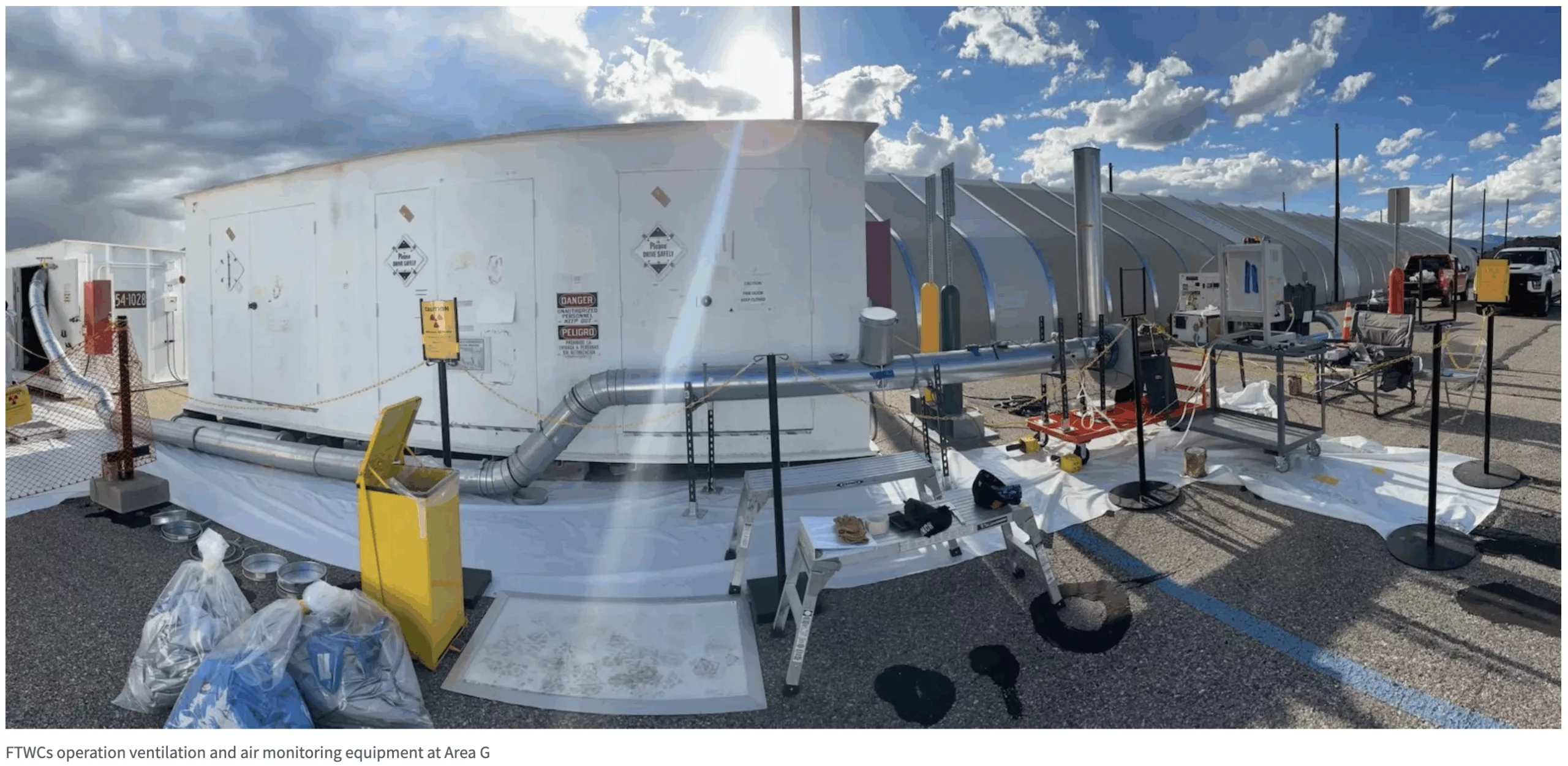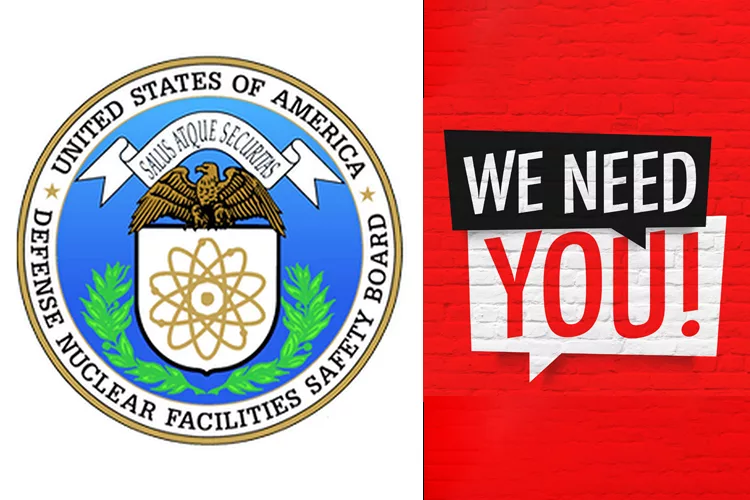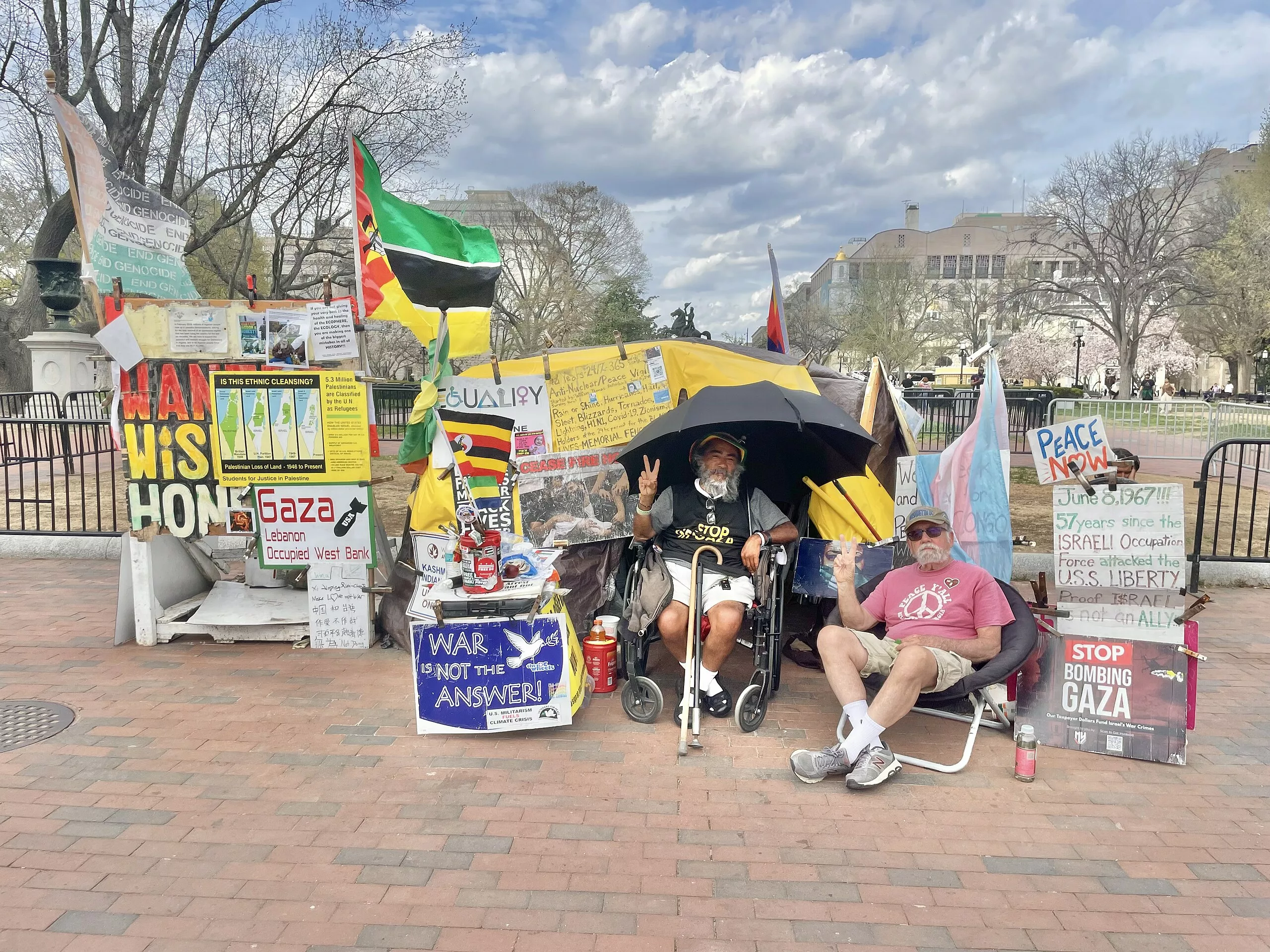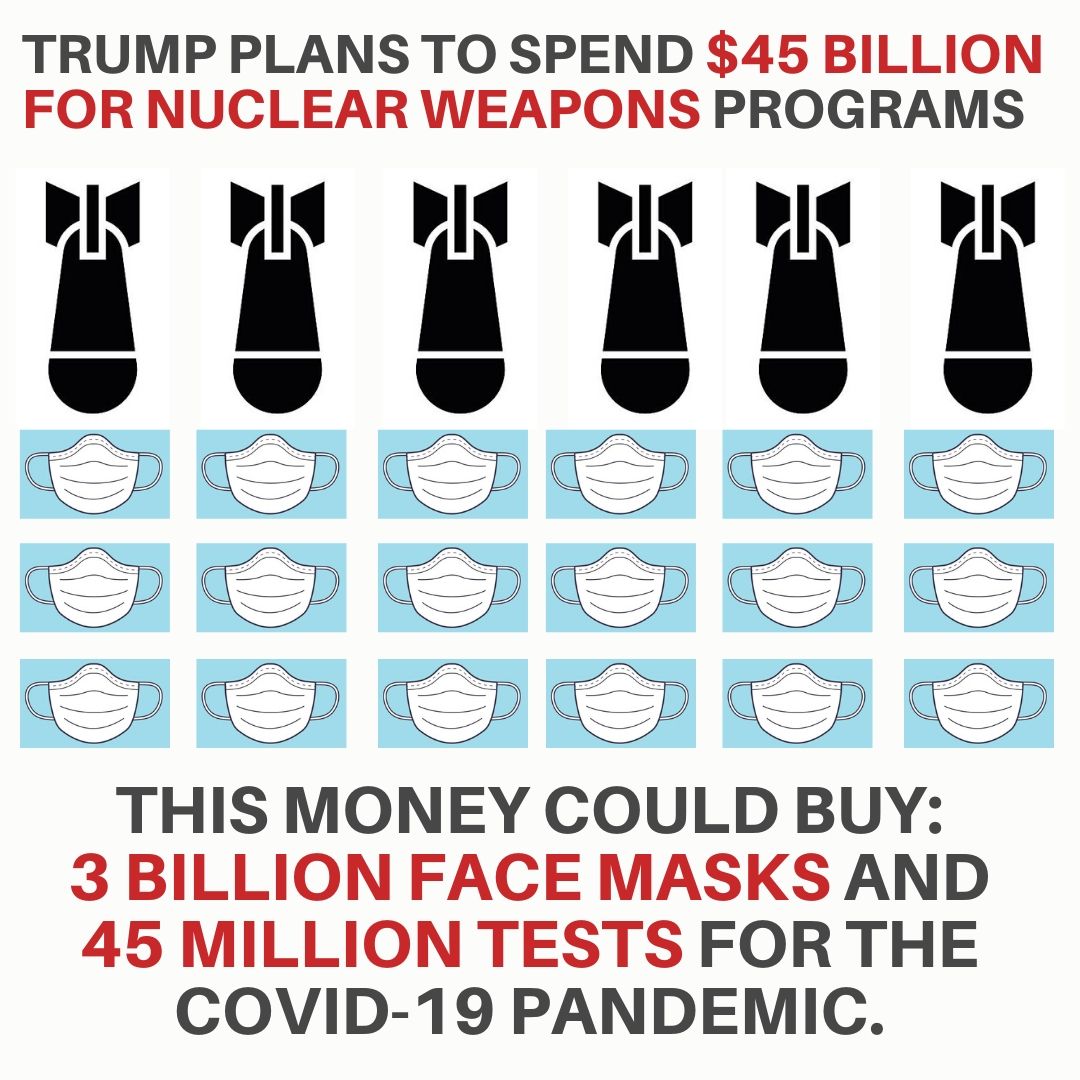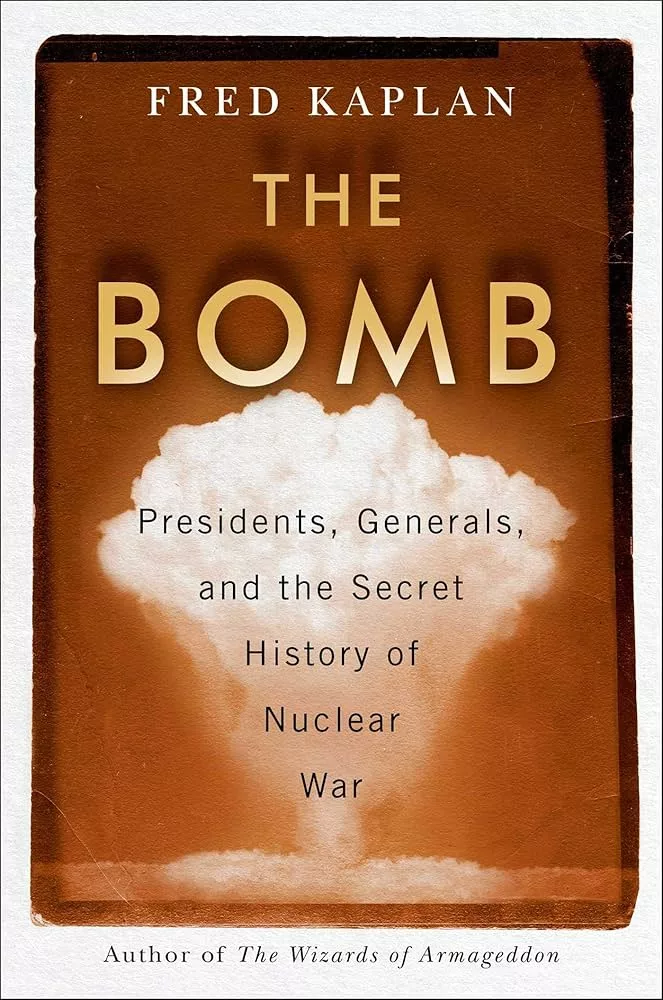Trump talk on nuke testing turns focus to New Mexico’s role in decades of blasts
Jay Coghlan, executive director of the nuclear watchdog group Nuclear Watch New Mexico, said Wright’s comments “somewhat” quelled his initial concerns about a renewed explosive nuclear testing program.
But he said claims Russia and China may be conducting small-scale tests known as hydronuclear tests — banned by the Comprehensive Nuclear Test Ban Treaty, of which the United States, Russia and China are all signatories — continue to give him pause. He fears rumors about the low-yield tests in other nations could be used to justify a domestic return to testing.
“That, in effect, would give permission to the U.S. [to resume testing],” Coghlan said. “But that would be in violation of the norm of the CTBT.”
Three decades removed from the United States’ last nuclear test, a testing regimen would likely be expensive and time-consuming to start up, Coghlan argued, and could prompt other nuclear powers to follow suit.
It seems likely Russia, at least, would: Following Trump’s post, Russian President Vladimir Putin announced if the United States resumed explosive nuclear testing, the Eastern European nation would follow.
“Then everybody else is going to do it, or virtually everybody else will do it, every other nuclear weapons power,” Coghlan said. “I could just see India and Pakistan champing at the bit to test. And then, of course, there’s North Korea and China.”
By Alaina Mencinger amencinger@sfnewmexican.com | November 30, 2025 santafenewmexican.com
It might not have as reverent a name as the Trinity Test or a litany of films made about it. But Project Gnome, a 1961 explosive nuclear test conducted near Carlsbad, is a relic of a bygone era in New Mexico and beyond.
In the 47 years between the Trinity Test and the end of the United States’ explosive nuclear testing in 1992, the nation would perform more than 1,000 such tests — more than any other nuclear nation — with most conducted in Nevada.
New Mexico might not have been the center of the nation’s testing efforts post-Trinity, which marked its 80th anniversary this year, but the state still played a role: Researchers from Sandia National Laboratories and Los Alamos National Laboratory helped design and conduct testing elsewhere, including at the Nevada Test Site and in the Marshall Islands.
Most Democrats and one-third of Republicans think it’s likely the U.S. will get into a nuclear war in the next decade
A new YouGov poll on nuclear weapons finds that nearly half of Americans believe it’s likely the U.S. will get into a nuclear war in the coming decade, and most are worried about personally experiencing a nuclear war. A majority believe nuclear weapons are making the world less safe, but opinions are mixed on whether the U.S. should dismantle all of its nuclear weapons.
By: Jamie Ballard| November 26, 2025 today.yougov.com
46% of Americans think it’s likely the U.S. will get into a nuclear war within the next 10 years; 37% think this is not very or not at all likely. 57% of Democrats and 37% of Republicans think this is likely.
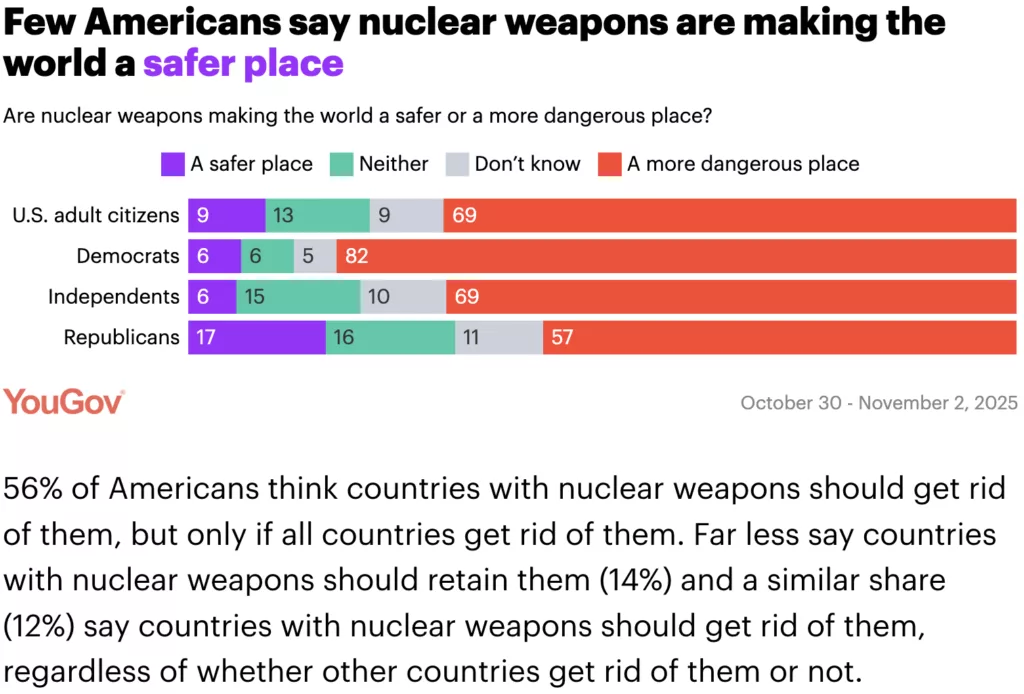
Department of Energy Seeks to Eliminate Radiation Protections Requiring Controls “As Low As Reasonably Achievable”
An internal Department of Energy (DOE) memorandum eliminates worker and public radiation protection rules known “As Low As Reasonably Achievable” (ALARA). This fundamental departure from decades of accepted health physics practices is being promoted by senior DOE political appointees with little background in health or radiation control. It is marked as “URGENCY: High” under the auspices of the DOE Deputy Secretary, the Under Secretary for Science, and the Administrator of the National Nuclear Security Administration. The memorandum awaits the final signature of DOE Secretary Chris Wright.
The memo’s stated goal is to:
“…remove the ALARA principle from all DOE directives and regulations, including DOE Order 458.1, Radiation Protection of the Public and the Environment, NE [Office of Nuclear Energy] Order 458.1, Radiation Protection of the Public, and, upon completion of the rulemaking process, 10 CFR [Code of Federal Regulations] 835, Occupational Radiation Protection.” [1]
It follows the playbook of the Heritage Foundation’s Project 2025, which called for:
“Set[ting] clear radiation exposure and protection standards by eliminating ALARA (“as low as reasonably achievable”) as a regulatory principle and setting clear standards according to radiological risk and dose rather than arbitrary objectives.” [2]
Lab Chromium Contamination Confirmed on San Ildefonso Pueblo Land
Comprehensive Cleanup Needed Instead of More Nuclear Weapons
The New Mexico Environment Department has announced:
“A toxic chromium plume from Los Alamos National Laboratory has spread beyond Lab boundaries onto Pueblo de San Ildefonso land for the first time, with contamination exceeding state groundwater standards… These new results are conclusive evidence that the U.S. Department of Energy’s efforts to contain the chromium plume have been inadequate.”
In reality, chromium groundwater contamination probably migrated beyond the LANL/San Ildefonso Pueblo boundary long ago, with past Lab maps of the plume “magically’ stopping at the border. In the past, tribal leadership has commented that it was fortunate that the contamination stopped there, but that any future indications of groundwater contamination on Pueblo land could have serious consequences. The San Ildefonso Pueblo is a sovereign Native American tribal government.
As late as the late 1990s the Lab was falsely claiming that groundwater contamination was impossible because underlying volcanic tuff is “impermeable.” [1] This ignored the obvious fact that the Parajito Plateau is heavily seismically fractured, providing ready pathways for contaminant migration to deep groundwater. By 2005 even LANL acknowledged that continuing increasing contamination of the regional aquifer is inevitable.[2] Some 300,000 northern New Mexicans rely upon the aquifer for safe drinking water. The potential serious human health effects (including cancer) caused by chromium contamination was the subject of the popular movie Erin Brockovich.
LANL chromium plume spreads onto San Ildefonso Pueblo land, NMED says
Nuclear Watch New Mexico executive direcor Jay Coghlan sees PF-4 as being a bigger scale — and having bigger risks — than the other aging buildings.
“PF-4 is not unique in being old,” Coghlan said. “However, PF-4 is totally unique in currently being the only facility that can process large amounts of plutonium … particularly including plutonium pit production. I think, in part, that’s why the Safety Board focuses more on PF-4 than, to my knowledge, than any other single individual facility.”
By:Patrick Lohmann | November 13, 2025 sourcenm.com
An underground plume of toxic chromium has spread from Los Alamos National Laboratory to Pueblo de San Ildefonso land, state Environment Department officials announced Thursday.
The discovery marks the first time the plume has been detected within the pueblo boundaries, officials said in a news release, though they added the plume’s spread does not pose imminent threats to drinking water in the pueblo or in Los Alamos County. That’s because the plume is not near any known private or public wells, officials said.
Long-term ingestion of hexavalant chromium can cause serious health problems or increase risk of certain cancers.
US Stands Alone Defying UN Vote on Nuclear Test Ban Treaty
Could the LDS Church end an ongoing nuclear weapons project? These veteran activists think so.
By Thalif Deen, Inter Press Sevice | November 12, 2025 ipsnews.net
UNITED NATIONS, Nov 12 2025 (IPS) – The US took another step backward –to break ranks with the United Nations– when it voted against a draft resolution calling for the entry into force of the Comprehensive Nuclear-Test-Ban Treaty (CTBT).
The negative vote followed an announcement by President Trump last month that the US plans to resume nuclear testing after a 33-year hiatus. The US stood alone on the UN vote, which was supported by almost all member States in the General Assembly’s First Committee.
The resolution was adopted by an overwhelming majority: with 168 votes in favor, with one against (United States) and 3 abstentions (India, Mauritius, Syria).
During Trump’s first term, the US abstained on the vote. And in other years they had been voting in favour.
Jackie Cabasso, Executive Director, Western States Legal Foundation, which monitors and analyzes U.S. nuclear weapons programs and policies, told IPS the chaos and uncertainty arose from Trump’s factually-challenged social media post that “because of other countries testing programs, I have instructed the Department of War to start testing our Nuclear Weapons on an equal basis.”
The U.S. government’s first ever “No” vote, on the annual UN resolution in support of the Comprehensive Test Ban Treaty (CTBT), raises further troubling questions about U.S. intentions.
Harking to the MX, Utahns call on LDS Church President Oaks to speak out against nuclear missile being developed in Utah
Could the LDS Church end an ongoing nuclear weapons project? These veteran activists think so.
THE SALT LAKE TRIBUNE | November 9, 2025 sltrib.com
Decades ago, peace activists helped keep a major nuclear weapons system out of Utah with help from key figures, chiefly Spencer W. Kimball, then the president of The Church of Jesus Christ of Latter-day Saints.
Now some of those same individuals are calling on the church’s newly ascended president, Dallin H. Oaks, to follow in his predecessor’s footsteps and speak out against the federal government’s development of a new generation of nuclear missile, known as Sentinel, partly in the Beehive State.
“The arms race continues,” the group of 12 Utahns and one former resident write in a letter mailed to church headquarters in early October, “and a new moral challenge faces” the leaders of the Utah-based faith.
Nuclear Weapons Issues & The Accelerating Arms Race: November 2025
Nuclear weapons:
The government shutdown has impact:
National Nuclear Security Agency confirms 152 furloughed at offices in Albuquerque, Los Alamos
Only 14 employees remain at the two sites By: Danielle Prokop-October 22, 2025
The NNSA confirmed 152 New Mexico employees charged with overseeing national laboratories’ nuclear weapons work were furloughed on Oct. 20, 2025. (Courtesy of NNSA)
The federal government this week sent home more than 150 federal New Mexico employees charged with overseeing national laboratories’ nuclear weapons work, with only 14 employees across two sites remaining at work, the National Nuclear Security Agency confirmed to Source NM.
The furloughs include 71 employees at NNSA’s Los Alamos field office and 81 at the Sandia National Laboratories location, NNSA Deputy Director of Communications Laynee Buckels told Source NM in an email. Seven employees remain at each site, working without pay, she said.
The field offices are responsible for “ensuring compliance with federal contracts to manage and operate the national security assets,” according to the NNSA website
To date there doesn’t appear to be furloughs at LANL, whose employees technically work for a contractor rather than the federal government. Congress is not furloughed, but Speaker Mike Johnson has kept the House out of session. As a result, legislation has come to a screeching halt.
Los Alamos’ plutonium facility safety systems need improvement, oversight board says
Nuclear Watch New Mexico executive direcor Jay Coghlan sees PF-4 as being a bigger scale — and having bigger risks — than the other aging buildings.
“PF-4 is not unique in being old,” Coghlan said. “However, PF-4 is totally unique in currently being the only facility that can process large amounts of plutonium … particularly including plutonium pit production. I think, in part, that’s why the Safety Board focuses more on PF-4 than, to my knowledge, than any other single individual facility.”
By Alaina Mencinger amencinger@sfnewmexican.com | November 7, 2025 santafenewmexican.com
An independent oversight agency wants to see improved safety systems at the facility at the heart of Los Alamos National Laboratory’s plutonium pit mission: PF-4.
The Defense Nuclear Facilities Safety Board reported what it believes to be gaps in a safety analysis drafted for PF-4 and delays in upgrades to safety systems in a letter last month to Energy Secretary Chris Wright.
“Maintaining momentum for these safety infrastructure projects is more important in light of the issues with the safety analysis,” the board wrote in the letter dated Oct. 10. It was signed by former acting chairman Thomas Summers.
LANL Prioritizes Plutonium “Pit” Bomb Core Production Over Safety
The independent Defense Nuclear Facilities Safety Board recently released its Review of the Los Alamos Plutonium Facility Documented Safety Analysis. It concluded that:
“While LANL facility personnel continue to make important upgrades to the Plutonium Facility’s safety systems, many of those projects have encountered delays due to inconsistent funding and other reasons. DOE and LANL should consider prioritizing safety-related infrastructure projects to ensure that the Plutonium Facility safety strategy adequately protects the public, as the facility takes on new and expansive national security missions.” (Page 24)
In early October 2024, the Department of Energy’s semi-autonomous National Nuclear Security Administration (NNSA) announced with great fanfare that the Los Alamos Lab had produced its first “diamond stamped” plutonium pit for the nuclear weapons stockpile. Tens of billions of taxpayers’ dollars have been sunk into LANL’s long delayed and over budget pit production program. Given no further announcements, it is not currently known whether or not the Lab is meeting its congressionally required production goals. Endemic nuclear safety problems have long been an intractable issue, at one point even forcing a three-year halt to plutonium operations at LANL’s Plutonium Facility-4 (“PF-4”).
In its recent Review, the Safety Board reported:
“The [2009] Plutonium Facility safety basis described very large potential [radioactive] dose consequences to the public following seismic events…. DOE committed to upgrade and seismically qualify the ventilation system, with a particular focus on a specific ventilation subsystem…”
“As the only facility in the DOE complex that can process large quantities of plutonium in many forms, [PF-4] represents a unique capability for the nation’s nuclear deterrent. The Board has long advocated for the use of safety-related active confinement systems in nuclear facilities for the purposes of confining radioactive materials…Passive confinement systems are not necessarily capable of containing hazardous materials with confidence because they allow a quantity of unfiltered air contaminated with radioactive material to be released from an operating nuclear facility following certain accident scenarios. Safety related active confinement ventilation systems will continue to function during an accident, thereby ensuring that radioactive material is captured by filters before it can be released into the environment… (Page 2, bolded emphases added)
AP: Trump appears to suggest the US will resume testing nuclear weapons for first time in 30 years
“For Trump, who has cast Russia as a “paper tiger” for failing to swiftly subdue Ukraine, the message is that Russia remains a global military competitor, especially on nuclear weapons, and that Moscow’s overtures on nuclear arms control should be acted on.”
By MICHELLE L. PRICE and CHRIS MEGERIAN | October 30, 2025 apnews.com
BUSAN, South Korea (AP) — President Donald Trump appeared to suggest the U.S. will resume testing nuclear weapons for the first time in three decades, saying it would be on an “equal basis” with Russia and China.
The Kremlin pointed out that a global ban on nuclear tests has remained in place, but warned that if any country resumes nuclear testing Russia would follow suit.
There was no indication the U.S. would start detonating warheads, but Trump offered few details about what seemed to be a significant shift in U.S. policy.
He made the announcement on social media minutes before he met with Chinese leader Xi Jinping on Thursday in South Korea. He offered little clarity when he spoke to reporters later aboard Air Force One as he flew back to Washington.
The U.S. military already regularly tests its missiles that are capable of delivering a nuclear warhead, but it has not detonated the weapons since 1992. The Comprehensive Nuclear Test Ban Treaty, which the U.S. signed but did not ratify, has been observed since its adoption by all countries possessing nuclear weapons, North Korea being the only exception.
REUTERS: Trump tells Pentagon to immediately resume testing US nuclear weapons
“Russia – which tested a new nuclear-powered cruise missile on October 21, held nuclear readiness drills on October 22 and tested a new nuclear-powered autonomous torpedo on October 28 – said it hoped Trump had been properly informed that Moscow had not tested a nuclear weapon itself.”
By Trevor Hunnicutt, Ismail Shakil and Kanishka Singh | October 30, 2025 reuters.com
VIEW THE RECORDING: Santa Fe Ecumenical Conversations Towards Nuclear Disarmament at Santa Maria de la Paz Catholic Community – Monday, October 27
Archbishop John C. Wester and NukeWatch New Mexico presented a special evening at Santa Maria de la Paz Catholic Community on Monday, October 27, from 6:00 to 8:00 p.m. MT. Following a presentation from NukeWatch executive director Jay Coghlan on U.S. nuclear weapons “modernization,” the Archbishop shared reflections from his pastoral letter, Living in the Light of Christ’s Peace, and speak about the importance of dialogue and hope in working toward nuclear disarmament.
View the recording at https://www.youtube.com/watch?v=9LFmQzMoJds&t=1s
Trump Orders Nuclear Weapons Testing for New Nuclear Arms Race
New Plutonium “Pit” Bomb Cores at Los Alamos Lab Could Make It Real
Just minutes before meeting with Chinese President Xi Jinping, Trump posted on his Truth Social media platform that “Because of other countries testing programs, I have instructed the Department of War to start testing our Nuclear Weapons on an equal basis. That process will begin immediately.” House Speaker Mike Johnson soon followed on CNN saying, “I think it is an obvious and logical thing to ensure that our weapons systems work.”
No other countries are currently testing nuclear weapons (the last was by North Korea in 2017). Further, any nuclear weapons tests by the U.S. would be performed by the Department of Energy (whose last test was in 1992), not the Department of War (until recently the Department of Defense). Trump was likely referring to Vladimir Putin’s recent claims of a new nuclear powered cruise missile and a tsunami-causing nuclear-armed torpedo that could threaten America’s coastal cities. In addition, China is dramatically expanding its own fleet of intercontinental ballistic missiles.
But central to all this is the U.S.’ own $2 trillion “modernization” program that will rebuild every nuclear warhead in the planned stockpile with new military capabilities and produce new-design nuclear weapons as well. This so-called modernization program will also build new nuclear weapons production facilities expected to be operational until ~2080, and buy new missiles, subs, and bombers from the usual rich defense contractors, all to keep nuclear weapons forever.
‘Nuclear weapons are blasphemous’: Archbishop Wester continues disarmament push with talk
This event was organized by the “Santa Fe Ecumenical Conversations Towards Nuclear Disarmament” group at the Santa Maria de la Paz parish near the Santa Fe Community College. They kindly invited NukeWatch to speak before Archbishop Wester for what turned out to be a wonderful event. The full recording can be viewed at https://www.youtube.com/@SMDLP/streams
By Cormac Dodd cdodd@sfnewmexican.com | October 28, 2025 santafenewmexican.com
Despite saying he has received a somewhat muted response from the local faithful, Santa Fe’s Catholic archbishop is still pushing nuclear disarmament as vital to humanity’s spiritual well-being and continued existence.
“I think nuclear weapons are blasphemous, because I think nuclear weapons are humanity’s attempt to build a Tower of Babel, an attempt to eat from the apple of the tree of the Garden of Eden, to become like God, to become gods,” Archbishop John C. Wester said in a roughly 30-minute address at Santa Maria de la Paz Catholic Church south of Santa Fe.
“In humility, we must avoid inventing anything that, in a matter of hours, can destroy what God has created,” the leader of the Archdiocese of Santa Fe continued. “The story of Adam and Eve is archetypal, I think: When human beings try to become as God, they lose the Garden of Eden and they must endure the cruel reality of paradise lost.”
The archbishop’s comments followed a journey he undertook to Japan on the 80th anniversary of the U.S. military’s decision to drop atomic bombs on Hiroshima and Nagasaki toward the end of World War II. He spoke in front of an audience of about 50 people — who gave Wester a standing ovation — at Monday’s event
In a Looming Nuclear Arms Race, Aging Los Alamos Faces a Major Test
The lab where Oppenheimer developed the atomic bomb is the linchpin in the United States’ effort to modernize its nuclear weapons. Yet the site has contended with contamination incidents, work disruptions and old infrastructure.
By Alicia Inez Guzmán | October 28, 2025 The New York Times nytimes.com
In a sprawling building atop a mesa in New Mexico, workers labor around the clock to fulfill a vital mission: producing America’s nuclear bomb cores.
The effort is uniquely challenging. Technicians at Los Alamos National Laboratory must handle hazardous plutonium to create the grapefruit-size cores, known as pits. They do so in a nearly 50-year-old building under renovation to address aging infrastructure and equipment breakdowns that have at times disrupted operations or spread radioactive contamination, The New York Times found.
Now, the laboratory is under increasing pressure to meet the federal government’s ambitions to upgrade the nation’s nuclear arsenal. The $1.7 trillion project includes everything from revitalizing missile silos burrowed deep in five states, to producing new warheads that contain the pits, to arming new land-based missiles, bomber jets and submarines.
But the overall modernization effort is years behind schedule, with costs ballooning by the billions, according to the Congressional Budget Office. In 2018, Congress charged Los Alamos with making an annual quota of 30 pits by 2026, but by last year it had produced just one approved for the nuclear stockpile. (Officials have not disclosed whether more have been made since then.)
*The featured image differs from the article photo due to usage rights.
Why Putin’s ‘invincible’ nuclear-powered missile is more likely to become a disastrous ‘flying Chernobyl’ for Russia
The US abandoned efforts to build nuclear-powered missile weapons during the 1950s arms race with the Soviet Union as a nuclear-powered missile would effectively be a huge radiation risk.
Jeffrey Lewis, a nuclear nonproliferation expert at Middlebury College, described it as a “tiny flying Chernobyl,” referencing the Soviet power plant that melted down and covered a 1,600-mile area with toxic radiation…While Lewis believes the Burevestnik is only capable of subsonic speed and easy to intercept, he warned that Russia’s ambition poses a return to the Cold War era.
“NATO aircraft could intercept it. The problem is that Burevestnik is yet another step in an arms race that offers no victory for either side,” he wrote on X.
By Ronny Reyes | October 28, 2025 nypost.com
Russian strongman Vladimir Putin’s latest threats that Moscow is preparing to deploy its new “invincible” nuclear-powered cruise missile has drawn a rebuke from President Trump and a reminder of America’s own nuclear might.
But experts say the Burevestnik missile could end up being more like a disastrous “flying Chernobyl” for Russia — and proves Putin is actually nervous about the possibility of the US giving Tomahawk cruise missiles to Ukraine.
George Barros, of the Washington-based Institute for the Study of War, described Putin’s ominous Sunday announcement as a form of fear mongering from a Kremlin afraid that the US could give Kyiv a much more conventional weapon — the tried and true Tomahawk.
Russia tested new nuclear-powered Burevestnik cruise missile
“For Trump, who has cast Russia as a “paper tiger” for failing to swiftly subdue Ukraine, the message is that Russia remains a global military competitor, especially on nuclear weapons, and that Moscow’s overtures on nuclear arms control should be acted on.”
By Guy Faulconbridge and Lidia Kelly Tim Balk | October 26, 2025 reuters.com
- Russia tests nuclear-capable Burevestnik missile
- Missile flew for 14,000 km, 15 hours
- Putin says it can pierce any missile defences
Trump Administration Providing Weapons Grade Plutonium to Sam Altman
“If there were adults in the room and I could trust the federal government to impose the right standards, it wouldn’t be such a great concern, but it just doesn’t seem feasible.”
By: Joe Wilkins | October 24, 2025 futurism.com
With the economy the way it is these days, it’s nice to have a little walking around money.
Donald Trump certainly thinks so. Since his return to the White House, the president has labeled 440 federal properties for possible sale, leased 13.1 million acres of public land for strip mining, and held a fire sale for satellites developed by NASA’s Jet Propulsion Lab.
In one of his wildest money moves to date, the Financial Times reports that Trump is now offering companies access to plutonium from America’s arsenal of cold war nuclear missiles.
On Tuesday, the US Department of Energy (DOE) launched an application for interested parties to apply for access to a maximum of 19 metric tonnes — a little under 42,000 pounds — of weapons-grade plutonium, which has long been a key resource undergirding the US nuclear arsenal.
One of the companies anticipated to receive shipments of the fissile isotope from the DOE is Oklo, a “nuclear startup” backed — and formerly chaired — by OpenAI CEO Sam Altman. Earlier in October, Oklo was one of four US companies chosen by the DOE to join a new pilot program meant to rush the testing and approval of experimental reactor designs.
As the FT reports, we won’t know for certain until December 31, when the DOE announces the companies selected to purchase the plutonium, but it’s likely Oklo will be among them. That’s stirring up plenty of anxiety throughout the scientific community, who say the relaxed approach to nuclear development is a major cause for alarm.
“If there were adults in the room and I could trust the federal government to impose the right standards, it wouldn’t be such a great concern, but it just doesn’t seem feasible,” Edwin Lyman, a physicist with the Union of Concerned Scientists told the FT.
U.S. Agency That Protects Nuclear Arsenal to Furlough Workers
Jay Coghlan, the executive director of Nuclear Watch New Mexico, a private group that monitors the agency, said it was unclear if the furloughs would have any immediate effect on nuclear safety. “As a baseline, the nuclear safety officers have always been understaffed. There is simply not enough federal oversight as is. And then you’re talking about furloughing more,” he added.
By Tim Balk | October 17, 2025 nytimes.com
![]() The National Nuclear Security Administration said 1,400 workers would be affected by Monday.
The National Nuclear Security Administration said 1,400 workers would be affected by Monday.
Nuclear weapons safety oversight in decline with Trump, Biden inaction
The lone independent federal agency responsible for ensuring safety at U.S. nuclear weapons sites — including Hanford in Washington state — will lose its ability to issue recommendations for safer work by January if the Trump administration doesn’t replenish its board, which this month dwindles to one member.
By Patrick Malone | October 15, 2025 seattletimes.com
The Defense Nuclear Facilities Safety Board ensures adequate public health and worker safety by scrutinizing hazardous work conducted by the U.S. Department of Energy and its contractors that produce and maintain the nuclear arsenal. If the Trump administration and Congress don’t move quickly to populate the board, it will be incapable of issuing formal safety recommendations to the Energy Department, according to a report last month from the Government Accountability Office, Congress’ investigative arm.
If the board is without a quorum of at least three members for a year, “the agency would essentially be able to offer only nonbinding advice to DOE,” according to the report.
“The whole idea of having the board in place is to provide the optics in addition to the substance,” Nathan Anderson, a Washington state-based director in the GAO’s natural resources division, told The Seattle Times.
The board does not have regulatory or enforcement authorities, but its advice carries significant weight and cannot be easily dismissed or disregarded, the GAO report states. The board’s recommendations to the U.S. secretary of energy are published for public comment, and the secretary must respond in writing. The board also reports each year to selected congressional committees on its recommendations to the Energy Department and any outstanding safety problems.
FULL ORIGINAL ARTICLE (SEATTLE TIMES)
YOU CAN HELP SAVE THE DNFSB TODAY:
Continue reading
New Article about “Participatory Democracy in Action” Describes WIPP Permit Negotiations
Thanks to our friends at Concerned Citizens for Nuclear Safety for this article:
In an essay for NYU’s Democracy Project, David F. Levi, a former federal judge and director emeritus of the Bolch Judicial Institute at Duke Law, reflected on the negotiations he facilitated in New Mexico about the renewal of the hazardous waste permit for the Waste Isolation Pilot Plant (WIPP), a deep geologic repository for plutonium-contaminated waste generated in the fabrication of nuclear weapons. Judge Levi’s essay is entitled “Participatory Democracy in Action.” He wrote:
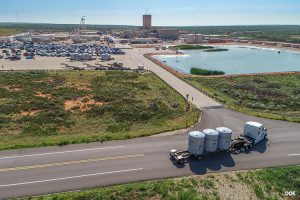 “A couple of years ago, I was asked to mediate a dispute between the U.S. Department of Energy (DOE) and the New Mexico Environment Department (NMED) concerning the renewal of a required state permit for DOE’s Waste Isolation Pilot Plant (WIPP), the nation’s only deep underground nuclear waste storage facility, located outside of Carlsbad, New Mexico. I thought I could help the two government entities but quickly came to realize that under the mediation procedures followed by New Mexico, the mediation would also involve citizen groups whose ultimate concurrence was essential to any complete resolution. This was entirely new to me.
“A couple of years ago, I was asked to mediate a dispute between the U.S. Department of Energy (DOE) and the New Mexico Environment Department (NMED) concerning the renewal of a required state permit for DOE’s Waste Isolation Pilot Plant (WIPP), the nation’s only deep underground nuclear waste storage facility, located outside of Carlsbad, New Mexico. I thought I could help the two government entities but quickly came to realize that under the mediation procedures followed by New Mexico, the mediation would also involve citizen groups whose ultimate concurrence was essential to any complete resolution. This was entirely new to me.
“In this case, there were seven such citizen groups entitled to participate and representing a variety of points of view. There was one group representing some of the government and business leaders of the town of Carlsbad who favored permit renewal on terms ensuring the continued long-term operation of WIPP. There were six groups expressing a variety of concerns about nuclear waste coming to New Mexico. They sought a more restrictive permit.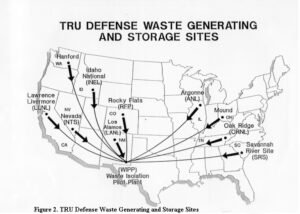
“To my astonishment, over the course of four full days, we worked through the multitude of issues and came to complete agreement. Something magical had happened. Thanks to the goodwill of the DOE and its contractor, the remarkable daily attendance and attentiveness of the NMED Secretary and the measured and well-informed way in which the various citizen groups made their points, we were able to find consensus and craft permit language that was acceptable to everyone.
“For me, as a former judge and mediator, the experience was thrilling. It was an experience of participatory democracy in action that made me proud of our fellow citizens and our government. Three aspects of the experience stand out. First, everyone in the room had taken responsibility for the way in which our nation’s only deep underground nuclear storage facility would be operated for the next 10 years. The citizen participants were not just making suggestions; they were assuming many of the attributes of decision makers. Second, all participants were advocating, compromising, and collaborating on behalf of what they saw as the public interest. These are the essential skills of democracy—the civic virtues so central to the Founders’ vision of what would make democracy work in America—and they require practice. Finally, over four days around a table, the citizens were able to take the measure of the DOE and NMED representatives. They came to realize, as I did, that these public servants, as well as the DOE contractor, were very well-informed, experienced, and intentioned. The government representatives had a similar experience of coming to appreciate the citizen questions and points of view. A government that relies on trust needs this kind of interaction to maintain that trust.
“It seems our democracy would be strengthened if we could extend the benefits of this kind of participatory structure to other areas of our legal and regulatory systems.”
“In Democracy in America, Alexis de Tocqueville made some of these points in reference to the jury trial in civil cases. He emphasized the importance of the civil jury trial as a free “public school” [https://contextus.org/Tocqueville,_Democracy_in_America_(1835),_Book_I,_Chapter_XVI_Causes_Mitigating_Tyranny_In_The_United_States_(Part_II).13?ven=Gutenberg&lang=en]  educating jurors in the democratic virtues and skills and teaching them to assume responsibility. In the same vein, every trial judge I know would attest to the importance of the jury experience for building confidence in the courts. After a trial, judges often hear words of gratitude from jurors who are deeply impressed by the legal process and are honored to have participated despite their initial dismay at being called to jury service. Sadly, the number of jury trials has diminished, particularly in federal court. Reversing that trend is a worthy goal, particularly for a branch of government that depends so heavily on public confidence.
educating jurors in the democratic virtues and skills and teaching them to assume responsibility. In the same vein, every trial judge I know would attest to the importance of the jury experience for building confidence in the courts. After a trial, judges often hear words of gratitude from jurors who are deeply impressed by the legal process and are honored to have participated despite their initial dismay at being called to jury service. Sadly, the number of jury trials has diminished, particularly in federal court. Reversing that trend is a worthy goal, particularly for a branch of government that depends so heavily on public confidence.
“As a final reflection: any persons involved as litigants will have an experience of the legal system. The experience can advance their sense of agency and participation, their ability to disagree civilly, and their trust in the courts. But how can these objectives be obtained when so many Americans cannot afford a lawyer? We can do so much better to provide understanding of and access to our justice system.”
The six New Mexico based non-governmental organizations were Citizens for Alternatives to Radioactive Dumping (CARD), Concerned Citizens for Nuclear Safety (CCNS), Conservation Voters New Mexico (CVNM), Nuclear Watch New Mexico, Southwest Alliance for a Safe Future (SAFE), and Southwest Research and Information Center (SRIC). The individual was Steve Zappe, a grandfather and former NMED WIPP Program Manager.
“A House of Dynamite” New Netflix Nuclear Catastrophe Film: Fiction, for Now
The reviews are rolling in for “A House of Dynamite,” which premiered in Europe earlier this month before coming to the U.S. on October 10th, with a full Netflix release scheduled for the 24th. Here’s the trailer, and see the schedule for Santa Fe theater showings here:
This Week! Santa Fe Theater Screenings for the Film “A House of Dynamite”
I attended one of these screenings last night, and I’ll let the professional critic reviews give the gist:
The Kathryn Bigelow thriller looks at what might happen if a ballistic missile were headed to the U.S. The director hopes the movie will start a conversation. New York Times: At Venice, ‘A House of Dynamite’ Is Scarier Than Most Horror Films
“The Netflix thriller captures from multiple perspectives the White House response to an unattributed missile launch headed for a major U.S. city in the harrowing 20 minutes until projected impact…”An unrelenting chokehold thriller so controlled, kinetic and unsettlingly immersive that you stagger out at the end of it wondering if the world will still be intact.” ‘A House of Dynamite’ Review: Idris Elba and Rebecca Ferguson in Kathryn Bigelow’s Precision-Tooled, Viscerally Unsettling Nail-Biter
“Told from the perspective of soldiers at a remote Alaskan missile base, staffers in the White House situation room, military officials at US Central Command (CENTCOM), and the president of the United States, the film weaves an overlapping timeline to show how the United States would respond to a missile attack…The film doesn’t want viewers to ask themselves how to thwart a nuclear attack on the United States. Rather, it wants the viewer to question the value of having nuclear weapons at all. ‘None of this makes sense,’ the President (Idris Elba) bemoans, ‘Making all these bombs and all these plans.'”
“A House of Dynamite is a terrifying examination of how terribly wrong things can go even with highly competent people in charge…But that’s also not necessarily the world we’re living in…The film shows why the worst can happen, even when competent, well-meaning people are trying to do the right thing.
But what if competence and decency are in short supply?” A House of Dynamite: Bigelow’s latest thriller shows why nuclear bombs are only part of the danger
This film left me reeling with tension and anxiety and exactly as the Times article titles it, is scarier than most horror films. Unlike ‘Oppenheimer,’ which largely glorified the invention of the atomic weapon, ‘A House of Dynamite’ makes it impossible to ignore the threat that nuclear weapons pose to our world. Working backwards from perspectives, and focused on how we can actually improve our odds of keeping this story a fictional one, here is what struck me most about this film:
-
-
Only one person decides what happens. But the real threat isn’t one reckless leader — it’s a reckless system. The final segment of the film features the “nuclear football” heavily, a briefcase containing launch procedures and options. In the United States, the president holds the sole and absolute authority to order the use of nuclear weapons. In the film, there are many voices in the President’s ear, but two primary perspectives quickly emerge after the defense fails and the ICBM remains inbound to its U.S. target: “One side advocates a retaliatory strike; the other, nothing. ‘It’s surrender or suicide,’ one adviser tells the President,” – thebulletin.org. The military aide carrying the nuclear football is tasked with providing the President the list of options if retaliation is chosen. An absolute must-read, Daniel Ellsberg’s book “The Doomsday Machine” breaks down many of the themes in the film with pure and terrifyingly honest account of Cold War-era nuclear strategy. In terms of launch authority, he describes how the inherent instability of the delegated command structure of the nuclear apparatus makes accidental or unwanted war an ever-present danger.
-
LANL tritium containers to head to Texas after last treatment
Four flanged tritium waste containers have been depressurized and transported to Los Alamos National Laboratory’s Weapons Engineering Tritium Facility, where they will be treated further before heading out-of-state for disposal.
By Alaina Mencinger amencinger@sfnewmexican.com | October 15, 2025 santafenewmexican.com
The containers’ final destination is Waste Control Specialists, a West Texas facility that handles the storage and disposal of radioactive waste.
The more than 1,300-acre facility in Andrews County is located on an approximately 14,000 acre property, which is sited on a thick clay formation which the company describes as “nearly impermeable.”
New documents have been added to the Los Alamos Legacy Cleanup Contract Electronic Public Reading Room.
All legacy cleanup documents required to be posted after April 30, 2018, are available on the site linked above.
For legacy cleanup documents that were posted prior to April 30, 2018, please visit the LANL electronic public reading room.
- Review, Notice of Completion of Off-Site Waste Shipments for Final Disposal, Activities 3.1.5, 3.1.8, and 3.3.4, Compliance Plan, Site Treatment Plan, Federal Facility Compliance Order Los Alamos National Laboratory [July 31, Aug. 21, 2025]
https://ext.em-la.doe.gov/GovFTPFiles/api/GetFiles/GetFile?fileName=EMID-703933_NMED_Review_STP_Shpmt_Jul_31_Aug_21_101525.pdf
Strong Political and Public Opposition Means Consolidated Interim Storage Facility (CISF) in NM “Impossible in the Near Future”
NEW UPDATE OCTOBER 10, 2025:
Holtec abandons plan to build New Mexico storage facility for spent nuclear fuel
This is excellent news. The Governor and state legislature (specifically Senator Jeff Steinborn and Representative McQueen) are to be commended for not allowing New Mexico to become the nation’s dumping ground for highly radioactive commercial spent fuel rods, especially when the Land of Enchantment has never had its own nuclear energy plant. Hard work from many New Mexicans made this happen.
So-called “interim” storage would never be interim when the federal government has failed for more than four decades to find a permanent repository for these lethal wastes. This also shows how hollow all the hype is about the claimed renaissance of nuclear power, when on the front end the industry can’t survive without taxpayer handouts, and on the back end can’t solve its radioactive waste problem.
Holtec’s quote that “New Mexico’s acquiescence is necessary” for interim storage to go forward is interesting, implying that we have to surrender as the nuclear colony that we are. Well, guess what, we didn’t surrender, and I predict you’ll see more of this. Moreover, whether you’re pro-nuclear or anti-nuclear, Holtec is an ethically questionable company, which is why the attorneys general of New Jersey and Massachusetts have sued it.
Adiós and good riddance, Holtec!
New York Times: Tax Break Scandal Leads to $5 Million Fine for N.J. Energy Company
SEE MORE:
Nuclear Weapons Issues & The Accelerating Arms Race: September 2025
Nuclear Weapons Update:
Putin has offered Trump a one-year extension of the numerical cap on strategic nuclear weapons in the new Strategic Arms Reduction Treaty which is 1,550 warheads (however, B52s are counted as one warhead while they can carry a dozen). New START expires in February 2026, which will be the first time the world will be without any nuclear arms control treaties since the mid-1970s. Trump has said it sounded like a good idea.
Note: New START ratification in 2010 provided the opportunity for Republicans in the Senate to attach the condition of $88 billion for nuclear weapons “modernization” that has since metastasized to ~$2 trillion. Nuclear disarmament must be prioritized as the ultimate goal over simply continued arms control.
A mere extension of the numerical cap would not involve Congressional ratification. The extension of New START’s numerical cap is in part to allow for a year in which to begin negotiations for a treaty replacement.
Plutonium Pit Production:
A draft plutonium pit production programmatic environmental impact statement is expected to be released next year in early 2026.
Accelerating Arms Race:
Is North Korea set to become world’s ‘fourth ICBM power’ after missile breakthrough? | Park Chan-kyong | South China Morning Post | September 11, 2025
A new era in North Korea’s missile programme may be dawning, as analysts warn of an imminent test launch of an intercontinental ballistic missile capable of carrying multiple warheads to the US mainland. Fresh from his appearance at China’s Victory Day parade in Beijing last week, North Korean leader Kim Jong-un personally oversaw the trial of a lighter, more robust solid-fuel ICBM engine, state media reported on Tuesday, touting the achievement as a “strategic” breakthrough.
Saudi Arabia signs a mutual defense pact with nuclear-armed Pakistan after Israel’s attack on Qatar | MUNIR AHMED & JON GAMBRELL | AP NEWS | September 18, 2025
DUBAI, United Arab Emirates (AP) — Pakistan’s defense minister says his nation’s nuclear program “will be made available” to Saudi Arabia if needed under the countries’ new defense pact, marking the first specific acknowledgment that Islamabad had put the kingdom under its nuclear umbrella.
Defense Minister Khawaja Mohammad Asif’s comments underline the importance of the pact struck this week between Pakistan and Saudi Arabia, which have had military ties for decades.
The move is seen by analysts as a signal to Israel, long believed to be the Middle East’s only nuclear-armed nation. It comes after Israel’s attack targeting Hamas leaders in Qatar last week killed six people and sparked new concerns among Gulf Arab nations about their safety as the Israel-Hamas war devastated the Gaza Strip and set the region on edge.
Russia suspected of helping North Korea build nuclear submarines, Seoul investigating | Park Chan-kyong | South China Morning Post | September 18, 2025
South Korea is investigating reports that Russia has supplied North Korea with nuclear submarine reactor modules, a move analysts see as highly plausible and one that could mark a breakthrough in Pyongyang’s decades-long push for a nuclear-powered navy… At the 8th Party Congress in January 2021, North Korea declared five core defence goals, including the development of nuclear-powered submarines and submarine-launched strategic nuclear weapons.
China Hardens Military Stance Against U.S. With Nuclear Weapons and Tough Talk | Brian Spegele | The Wall Street Journal| September 18, 2025
China played down its rapidly rising military might for years. In the past few weeks, Beijing has broadcast a steady drumbeat of firepower displays and muscular rhetoric, carrying an unmistakable warning for the U.S… Part of China’s confidence stems from the rapid growth of its firepower. The Pentagon estimates that China’s stockpile of nuclear warheads has more than doubled since 2020, alongside a growing array of options to launch those weapons, from mobile ground-launch systems to increasingly stealthy submarines.
Holtec Pulls Out of New Mexico Spent Nuclear Fuel Interim Storage Project
Holtec International has confirmed it is canceling plans to build a consolidated interim storage facility for spent nuclear fuel in southeastern New Mexico.
By Radwaste Solutions | October 9, 2025 ans.org
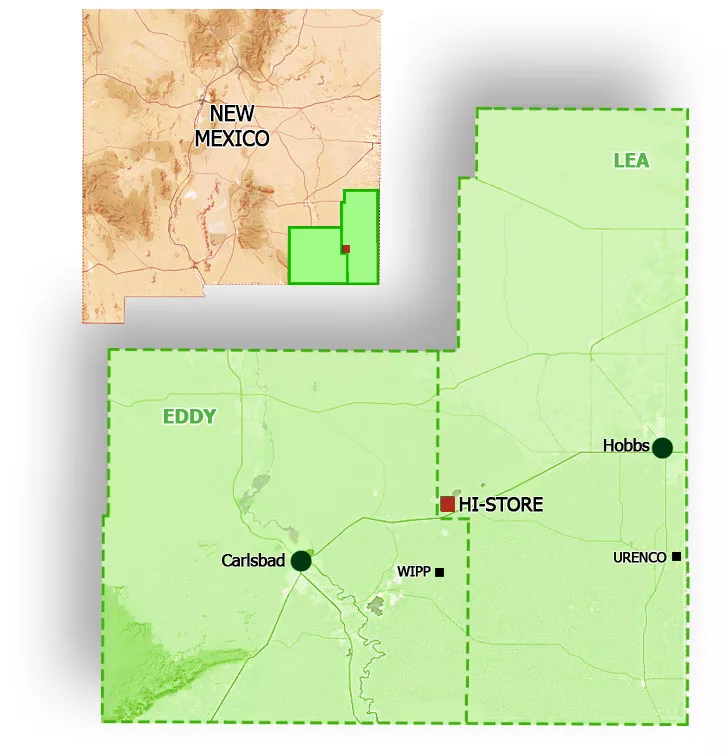
Named the HI-STORE CISF, the facility would have stored up to 10,000 canisters of commercial SNF on land owned by the Eddy-Lea Energy Alliance (ELEA) near the towns of Carlsbad and Hobbs.
“After discussions with our longtime partner in the HI-STORE project, the Eddy-Lea Energy Alliance, and due to the untenable path forward for used fuel storage in New Mexico, we mutually agreed upon canceling the agreement. This allows for ELEA to work to redevelop the property in a manner that fits their needs and allows Holtec to work with other states who are amenable to used fuel storage based on the recent DOE work on public education and outreach,” Holtec said in a statement (emphasis added).
Following the U.S. Supreme Court’s June ruling in NRC v. Texas, which found that petitioners did not have standing to challenge the Nuclear Regulatory Commission’s licensing of Interim Storage Partners’ CISF in Texas, Holtec said it expected to have its HI-STORE CISF license reinstated, allowing the company to move forward with the project. Holtec and ISP’s NRC licenses were vacated by the 5th Circuit Court of Appeals in a 2023 ruling.
Despite the court’s decision, New Mexico Gov. Michelle Lujan Grisham said she remained committed to preventing the HI-STORE CISF from being built. In 2023, New Mexico passed a bill barring the storage and disposal of high-level radioactive waste in New Mexico without the state’s explicit consent.
The AI Doomsday Machine Is Closer to Reality Than You Think
“Most troubling to experts on AI and nuclear weapons is that it’s getting harder and harder to keep decisions about targeting and escalation for nuclear weapons separate from decisions about conventional weapons.”
“There is no standing guidance, as far as we can tell, inside the Pentagon on whether and how AI should or should not be integrated into nuclear command and control and communications,” says Jon Wolfsthal, director of global risk at the Federation of American Scientists.
By Michael Hirsh | September 2, 2025 politico.com
Jacquelyn Schneider saw a disturbing pattern, and she didn’t know what to make of it.
Last year Schneider, director of the Hoover Wargaming and Crisis Simulation Initiative at Stanford University, began experimenting with war games that gave the latest generation of artificial intelligence the role of strategic decision-makers. In the games, five off-the-shelf large language models or LLMs — OpenAI’s GPT-3.5, GPT-4, and GPT-4-Base; Anthropic’s Claude 2; and Meta’s Llama-2 Chat — were confronted with fictional crisis situations that resembled Russia’s invasion of Ukraine or China’s threat to Taiwan.
Director Kathryn Bigelow is Sounding the Nuclear Alarm – Washington Post New Review
“A House of Dynamite” asks: How would the White House respond in the face of a nuclear attack?
By Max Boot | October 2, 2025 washingtonpost.com
VIEW MORE: “A House Of Dynamite” Q&A w/ Director Kathryn Bigelow, Tracy Letts, Jared Harris, And More At New York Film Fest —
80th Commemorations of Ban the Bomb – Trinity, Hiroshima & Nagasaki Remembrances in New Mexico
Exchange Monitor: DNFSB makes agency fixes, but needs members, GAO finds
The Defense Nuclear Facilities Safety Board (DNFSB) has tackled all but a few third-party recommendations to improve its culture over the past decade but suffers from a depleted board, according to a new report.
By ExchangeMonitor | September 5, 2025 santafenewmexican.com
Progress is tough with the five-person board probably…
China Hardens Military Stance Against U.S. With Nuclear Weapons and Tough Talk
Xi positions Beijing as powerful center of new global order as security forum convenes in capital
By Brian Spegele | September 18, 2025 wsj.com
BEIJING—China played down its rapidly rising military might for years. In the past few weeks, Beijing has broadcast a steady drumbeat of firepower displays and muscular rhetoric, carrying an unmistakable warning for the U.S….
Saudi Arabia signs a mutual defense pact with nuclear-armed Pakistan after Israel’s attack on Qatar
While not specifically discussing the bomb, the agreement states “any aggression against either country shall be considered an aggression against both,” according to statements issued by both Pakistan’s Foreign Affairs Ministry and the state-run Saudi Press Agency.
By MUNIR AHMED and JON GAMBRELL | September 18, 2025 apnews.com
ISLAMABAD (AP) — Saudi Arabia and nuclear-armed Pakistan have signed a mutual defense pact that defines any attack on either nation as an attack on both — a key accord in the wake of Israel’s strike on Qatar last week.
The kingdom has long had close economic, religious and security ties to Pakistan, including reportedly providing funding for Islamabad’s nuclear weapons program as it developed. Analysts — and Pakistani diplomats in at least one case — have suggested over the years that Saudi Arabia could be included under Islamabad’s nuclear umbrella, particularly as tensions have risen over Iran’s atomic program.
COMMUNITIES FOR CLEAN WATER: LANL Radioactive Tritium Venting Fails to Provide Transparency, Assurance, and Respect for Local Communities
FOR IMMEDIATE RELEASE: September 18, 2025
Santa Fe, NM — As NNSA and LANL continue operations to depressurize Flanged Tritium Waste Containers, Communities for Clean Water (CCW) calls out federal agencies for issuing vague assurances instead of transparent, verifiable data — and for dismissing community concerns with contradictory and incomplete statements that disregard what independent experts have found, the Department of Energy’s (DOE) own legal obligations, and the New Mexico Environment Department’s (NMED) acknowledgment that LANL has a long record of compliance failures.
“How can our communities be expected to trust LANL when they won’t give us access to the raw, real-time monitoring data – independently verified by the EPA,” asks Joni Arends with Concerned Citizens for Nuclear Safety. “Without this transparency, LANL is continuing a legacy of empty assurances, not accountability.”
Key Concerns:
-
Lack of real-time transparency – Since Friday (Sept. 12), the public has been forced to rely on NMED’s Facebook page for piecemeal updates. While LANL’s website provides very brief daily summaries, no near-real-time monitoring dashboard from DOE, NNSA, or LANL has been made available.
-
Vague assurances, not real information – NNSA’s updates claim “no tritium was released” while simultaneously telling the public to expect “very low levels of tritium” for subsequent venting. Without numbers, monitoring data, or detection thresholds, these phrases do not provide reassurance.
-
Weather risks – LANL has not disclosed thresholds for wind, rain, or humidity that would postpone venting. Communities watch weather shifts in real time but are left in the dark about how safety decisions are being made.
-
Dismissal of public health concerns – When asked for plain-language guidance that NMED stated LANL would provide, LANL responded only with “no offsite impact anticipated.” This is not meaningful and reassuring guidance, it’s a blanket dismissal that disregards independent expert findings and fails to meet DOE’s obligations to protect vulnerable populations.
-
Ignoring daily lifeways – Avoiding Pueblo Feast Days is not enough. This is harvest season, when outdoor cultural events, youth programs, and farming are in full swing. LANL’s scheduling continues to disregard these realities.
Unanswered Questions
Independent experts and community advocates have raised critical unanswered questions:
-
Unclear “depressurization” – LANL said “no internal pressure was found” in a container, but also claimed it was “depressurized.” If no pressure existed, what was released?
-
Unanswered helium questions – NMED stated helium was released, but LANL has not explained its origin. Was it introduced at sealing of the outer container, or a decay product of tritium?
-
Monitoring limits undisclosed – LANL has not disclosed the detection limits of its monitoring equipment. Readings “indistinguishable from zero” could still mask releases.
DOE NNSA Gives Misleading Statements on Native America Calling
On a recent Native America Calling program, DOE NNSA’s Los Alamos Field Office Deputy Director Pat Moss compared LANL venting to global natural tritium stocks. Independent expert Dr. Arjun Makhijani pointed out this comparison as misleading: “The problem is not global background, but local contamination. If venting occurs in rain and calm winds, local rainfall could exceed U.S. drinking water standards by hundreds to thousands of times.”
In their most recent public meeting, LANL admitted that infants could receive three times the radiation dose as adults. During the interview, Dr. Makhijani pressed this point – if adults are modeled at 6 mrem, that means infants could be at 18 mrem, nearly double the EPA’s 10 mrem compliance limit. Instead of addressing this directly, Mr. Moss provided a stock line, “We will be compliant with the regulatorily imposed release threshold and will be doing the calculations per the regulation.”
That is exactly the problem – hiding behind regulatory caps while ignoring clear evidence that infants, our most vulnerable, face exposures above legal limits.
DOE NNSA also pointed to the Defense Nuclear Facilities Safety Board (DNFSB) – an independent federal oversight body created by Congress – as if it had declared the tritium venting operation as “fully protective of the public”. That is misleading. First, the DNFSB has been operating without a quorum for months, limiting its ability to issue independent recommendations. Second, what the Board staff said in its July 2025 presentation was that the overall nuclear safety risk to the public is low if DOE’s proposed controls are followed. The DNFSB has also flagged ongoing safety concerns at LANL including deficiencies in Area G’s safety analysis and risk to workers.
First of four containers of tritium waste at LANL has been vented
The first of four flanged tritium waste containers awaiting removal from Los Alamos National Laboratory has been vented, the New Mexico Environment Department announced Tuesday afternoon.
By Alaina Mencinger amencinger@sfnewmexican.com | September 16, 2025 santafenewmexican.com
The container can now be moved for treatment at LANL and then, eventually, to an off-site disposal area.
No internal pressure was found in the first container, according to the National Nuclear Security Administration, suggesting the inner containers in the flanged tritium waste container hadn’t leaked. Air monitoring did not show an increase of tritium beyond background levels, the federal agency wrote.
No tritium emissions were released, the Environment Department wrote in its Tuesday post on X, formerly Twitter. Both the state agency and the U.S. Environmental Protection Agency are monitoring the process.
The depressurization of the containers is set to continue at 7 a.m. Wednesday, although the NNSA noted the schedule is subject to change due to weather. The four containers will be vented one at a time over an estimated two-week period.
*The featured image differs from the article photo due to usage rights.
New Mexicans Can Save the DNFSB; Contact Our Senators Today
From our friends at Concerned Citizens for Nuclear Safety:
The independent Defense Nuclear Facilities Safety Board has been dwindling from a five-member board to one member and may disappear if we, the People, do not raise our voices to support its essential nuclear safety work. The Safety Board needs at least two new members. And that needs to get done by Saturday, October 18th. https://www.dnfsb.gov/about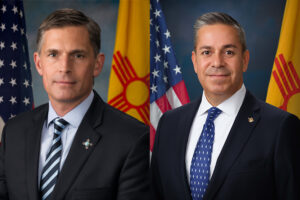
New Mexico U.S. Senators Heinrich and Lujan have key roles to play to ensure the Safety Board’s work continues unimpeded. https://www.heinrich.senate.gov/ and https://www.lujan.senate.gov/ Our voices of support are essential to ensure communities continue to receive the essential services of the Safety Board and its staff.
Right now members of the Safety Board’s staff are monitoring the venting of radioactive tritium from Area G at Los Alamos National Laboratory (LANL). Their expertise in the field of nuclear safety and their demonstrated competence and knowledge relevant to their independent investigative and oversight functions are an essential part of the process. They will be part of the follow-up once the venting of the four flanged tritium waste containers is completed. https://tewawomenunited.org/?s=tritium, https://www.ccwnewmexico.org/tritium, https://nuclearactive.org/
Not only does the Safety Board have staff at LANL, but also at Sandia National Laboratories in Albuquerque and at the Waste Isolation Pilot Plant, the burial site for plutonium contaminated nuclear weapons waste, near Carlsbad. https://ananuclear.org/facilities/
Russia suspected of helping North Korea build nuclear submarines, Seoul investigating
Analysts said such a technology transfer was plausible given Pyongyang’s support for Russia’s ongoing war in Ukraine
By Park Chan-kyong | September 18, 2025 scmp.com
South Korea is investigating reports that Russia has supplied North Korea with nuclear submarine reactor modules, a move analysts see as highly plausible and one that could mark a breakthrough in Pyongyang’s decades-long push for a nuclear powered navy…
Holy See tells nations at UN to end threat of nuclear weapons, even as deterrence
Amid a global arms race, ending the threat of nuclear war — and even the testing of nuclear weapons — is imperative, said the Holy See’s diplomat to the United Nations.
By Gina Christian, OSV News | September 8, 2025 catholicreview.org
Archbishop Gabriele G. Caccia, the Holy See’s U.N. permanent observer, shared his thoughts in a statement he delivered Sept. 4 at U.N. headquarters in New York, during the General Assembly High-level Plenary Meeting to Commemorate and Promote the International Day Against Nuclear Tests, observed that same day.
“The pursuit of a world free of nuclear weapons is not only a matter of strategic and vital necessity, but also a profound moral responsibility,” Archbishop Caccia in his remarks.
He pointed to the introduction of nuclear weapons — first detonated by the U.S. in 1945 over the Japanese cities of Hiroshima and Nagasaki, killing an estimated 110,000 to 210,000 people, during World War II — as unveiling to the world “an unprecedented destructive force.”
Historic peace vigil partially dismantled after Trump orders: ‘Take it down’
Law enforcement officials on Sunday removed parts of the White House Peace Vigil, which has sat just outside the White House for decades.
By Marissa J. Lang, The Washington Post | September 8, 2025 washingtonpost.com
But over the past week, it faced a new threat as Trump turned his attention to the vigil and federal officers picked apart the structure that shields protesters and their signs from the elements. The vigil is maintained by a rotating cast of volunteers who keep the protest going 24 hours a day, seven days a week.
On Friday, Brian Glenn, a correspondent for the conservative network Real America’s Voice, told the president during a gathering with reporters that there was “a blue tent” in front of the White House that was “an eyesore.” Trump initially said he was unaware of it, but he then quickly ordered its removal.
Photo by Sig. Chiocciola, Creative Commons: The White House Peace Vigil on March 30, 2025 staffed by volunteers, Philipos Melaku-Bello (left) and Joe Brown (right).
For 80 years, nuclear weapons have been the unused threat
Amid a global arms race, ending the threat of nuclear war — and even the testing of nuclear weapons — is imperative, said the Holy See’s diplomat to the United Nations.
By Matt Kelly, mkelly@virginia.edu, September 3, 2025 news.virginia.edu
In the 80 years since World War II, which ended with the use of two atomic bombs, the world has maintained a tenuous relationship with nuclear weapons.
Philip Potter, professor of public policy at the University of Virginia’s Frank Batten School of Leadership and Public Policy and director of the National Security Data and Policy Institute, said he worries about the current delicate nuclear balance.
“Eighty years of non-use is the product of both good diplomacy and a recognition of the potential consequences,” Potter said. “The fearsome power of nuclear weapons causes countries pause before they use them, but a great deal of work has also gone into nonproliferation and the management of crises to keep them away from the nuclear brink. In some ways the dynamics of the Cold War made managing the potential for nuclear confrontation easier.”
It’s a very different strategic scenario now, where there are nine nuclear powers and less capacity to manage them.
A House of Dynamite review – Kathryn Bigelow’s nuclear endgame thriller is a terrifying, white-knuckle comeback
★★★★★: Amid a global arms race, ending the threat of nuclear war — and even the testing of nuclear weapons — is imperative, said the Holy See’s diplomat to the United Nations.
By Peter Bradshaw, The Guardian | September 2, 2025 theguardian.com
Kathryn Bigelow has reopened the subject that we all tacitly agree not to discuss or imagine, in the movies or anywhere else: the subject of an actual nuclear strike. It’s the subject which tests narrative forms and thinkability levels.
Maybe this is why we prefer to see it as something for absurdism and satire – a way of not staring into the sun – to remember Kubrick’s (brilliant) black comedy Dr Strangelove, with no fighting in the war room etc, rather than Lumet’s deadly serious Fail Safe.
Nuclear News Archive – 2022
NPT Review Conference To Be Postponed
“The specter of unconstrained nuclear competition looms over us for the first time since the 1970s. We are witnessing what has been termed a qualitative nuclear arms race, one not based on numbers but on faster, stealthier and more accurate weapons. Regional conflicts with a nuclear dimension are worsening, and proliferation challenges are not receding,” United Nations High Representative for Disarmament Affairs Izumi Nakamitsu
Daryl G. Kimball, executive director | armscontrol.org
The global coronavirus disease (COVID-19) pandemic has forced a postponement of the 10th review conference of the nuclear Nonproliferation Treaty (NPT), possibly until early 2021. Originally scheduled to be held at UN headquarters in New York from April 27 until May 22, the conference typically involves hundreds of representatives from most of the 191 states-parties to the treaty, as well as nongovernmental organizations and meeting support personnel. The conference caps off a five-year cycle of meetings through which states-parties review implementation and compliance with the treaty and seek agreement on action steps to overcome new challenges and to fulfill core goals and objectives.
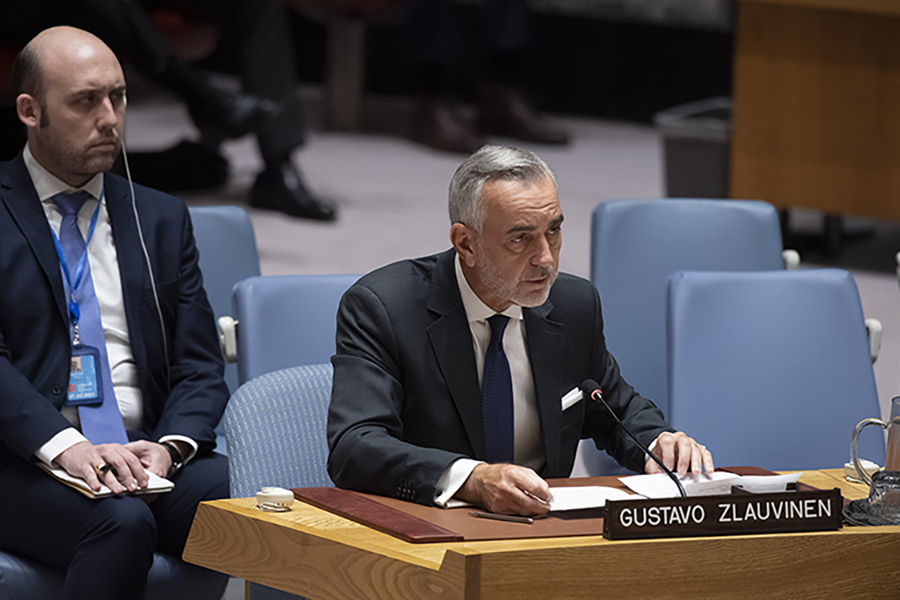
PENTAGON ASKS TO KEEP FUTURE SPENDING SECRET

“At a time when it is clear to everyone that US national security spending is poorly aligned with actual threats to the nation, the DoD proposal would make it even harder for Congress and the public to refocus and reconstruct the defense budget.”
The Department of Defense is quietly asking Congress to rescind the requirement to produce an unclassified version of the Future Years Defense Program (FYDP) database.
Preparation of the unclassified FYDP, which provides estimates of defense spending for the next five years, has been required by law since 1989 (10 USC 221) and has become an integral part of the defense budget process.
But the Pentagon said that it should no longer have to offer such information in an unclassified format, according to a DoD legislative proposal for the pending FY 2021 national defense authorization act.
New study says LANL nuclear pit production could go higher
Jay Coghlan, executive director of Nuclear Watch New Mexico, said he doubted the lab has the “expertise and competence” to produce 80 plutonium pits, “but they’re going to eat up taxpayers’ money.” Coghlan said he’s also concerned about defense leaders refusing to use the thousands of pits stockpiled during the Cold War and instead favoring new, heavily modified pits. That raises the question of whether the Pentagon might resume nuclear testing on these untried cores instead of computer simulations.
BY: SCOTT WYLAND | santafenewmexican.com
Los Alamos National Laboratory should be able to produce 80 plutonium pits to meet surges in demand, not just the official goal of 30 pits a year, according to a proposed update to the lab’s last sitewide analysis.
Defense plans call for the lab to produce 30 pits — the grapefruit-sized explosive centers in nuclear warheads — in 2026 and the Savannah River Site to manufacture 50 in 2030.
Legacy Nuclear Weapons Maintenance Wastes
Every base where legacy nuclear weapons (early-generation) were deployed (Bomber, Fighter Interceptor Squadrons (FIS), Nike Ajax, BOMARC Missile, ICBM), were maintained, or decommissioned, is potentially contaminated with highly classified 91(b) radioactive material (RAM) from the maintenance of the nuclear weapons during the replacing of the polonium-beryllium (Po-Be) TOM initiators.
BY ANNETTE CARY | georgeafb.info
There is an under-reported news story about radioactive contamination at Air Force bases that were closed and transferred to the public by the Base Realignment and Closure Commission (BRAC).
ONE YEAR OF U.S. NUCLEAR WEAPONS SPENDING WOULD PROVIDE 300,000 ICU BEDS, 35,000 VENTILATORS AND SALARIES OF 75,000 DOCTORS
MATTHEW IMPELLI | newsweek.com
The amount of money spent in one year by the U.S. on nuclear weapons could instead provide 300,000 ICU (intensive care unit) beds, 35,000 ventilators and 75,000 doctors’ salaries, according to the International Campaign to Abolish Nuclear Weapons (ICAN)–a “coalition of non-government organizations promoting adherence to and implementation of the UN [United Nations} nuclear weapon ban treaty.”
In its recent report, the group stated that, according to armscontrol.org, the U.S. spent $35.1 billion on nuclear weapons in 2019. The costs are based on reported averages, but the study noted that the $35.1 billion in nuclear weapons spending would instead pay for “300,000 beds in intensive care units, 35,000 ventilators, and the salaries of 150,000 U.S. nurses and 75,000 U.S. doctors.”
E.P.A., Citing Coronavirus, Drastically Relaxes Rules for Polluters
“Environmental groups and former Obama administration officials described the policy as an unprecedented relaxation of rules for petrochemical plants and other major polluters.”
WASHINGTON — The Environmental Protection Agency on Thursday announced a sweeping relaxation of environmental rules in response to the coronavirus pandemic, allowing power plants, factories and other facilities to determine for themselves if they are able to meet legal requirements on reporting air and water pollution.
The move comes amid an influx of requests from businesses for a relaxation of regulations as they face layoffs, personnel restrictions and other problems related to the coronavirus outbreak.
Trump’s Environmental Rollbacks Find Opposition Within: Staff Scientists
“Federal scientists and lawyers, told to undo regulations that some have worked on for decades, have embedded data into technical documents that environmental lawyers are using to challenge the rollbacks.”
ARTICLE BY: CORAL DAVENPORT | nytimes.com
“WASHINGTON — President Trump has made rolling back environmental regulations a centerpiece of his administration, moving to erase Obama-era efforts ranging from landmark fuel efficiency standards and coal industry controls to more routine rules on paint solvents and industrial soot.
Most Hanford workers to stay home over coronavirus concerns. No word on for how long
The site in Eastern Washington was used during World War II and the Cold War to produce plutonium for the nation’s nuclear weapons program. It was left massively contaminated with radioactive and hazardous chemical waste, which is being cleaned up now at a cost of about $2.5 billion a year.
BY ANNETTE CARY | tricityherald.com
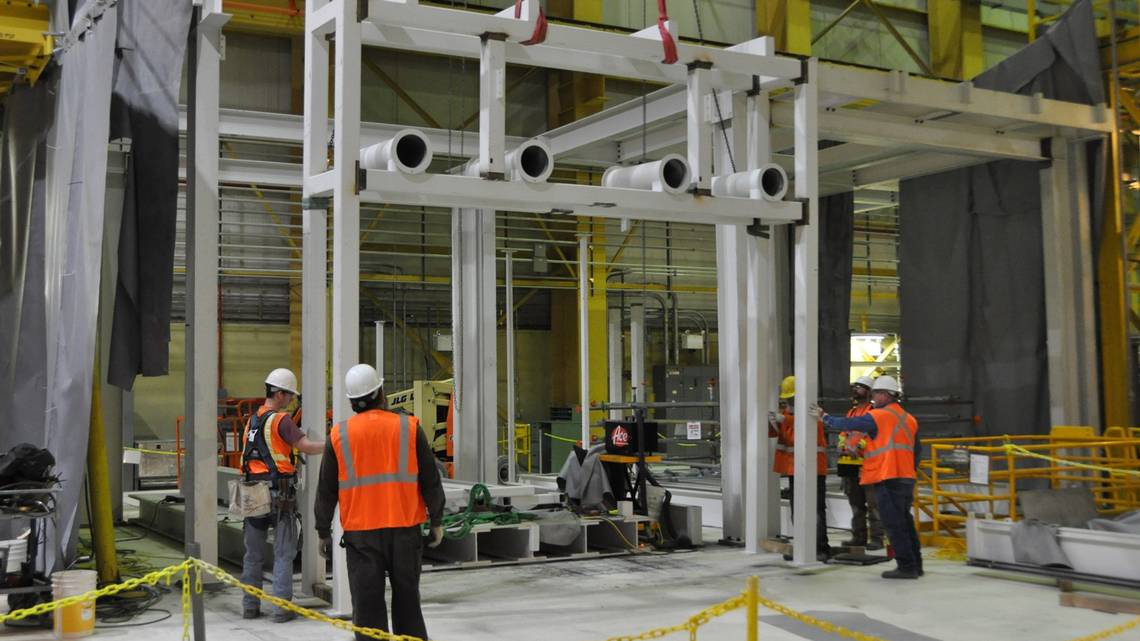
Thousands of Hanford workers will stay home for a second day Tuesday after the Department of Energy announced Sunday evening that the site was going into a temporary planning status to ensure the safety of employees during the COVID-19 pandemic.
Only workers essential to the nuclear reservation’s safety and security should report to work, unless they receive a call from their supervisor saying they are needed for planning work, DOE said.
Hanford employs about 9,300 workers, plus some additional subcontractor employees.
The Coronavirus and the Urgent Need to Redefine National Security
“In order to address serious domestic concerns [such as coronavirus], the United States must seek significant savings by reducing the Pentagon budget, ending endless wars, and returning to the arms control and disarmament arena.”
ARTICLE BY: MELVIN GOODMAN | counterpunch.org

For far too long, the United States has been wastefully spending its precious budgetary resources on a nineteenth-century military strategy and a strategic arms policy that has brought no advantages to the American people. For the past three decades, our national security policies have been ineffectual and irrelevant to the genuine threats we face today. These threats do not emanate from Russia or China. Rather, they stem from an underfunded and highly vulnerable public health system, a cyber world that is out of control, and a crumbling infrastructure. In 2017, the American Society of Civil Engineers gave a grade of D-plus to the nation’s infrastructure, with the lowest grades going to roads, bridges, mass transit, and water management systems.
Coronavirus pandemic could delay licensing of nuclear waste facility near Carlsbad
New Mexico’s congresspeople called on the federal government to extend a public comment period for an environmental impact statement (EIS) on a proposal by Holtec International to build a nuclear waste repository in southeast New Mexico.
ADRIAN HEDDEN | currentargus.com
Gov. Chris Christie, Camden Mayor Dana Redd and other officials spoke about the international firm’s role in reviving the city during a Sept. 7 ribbon-cutting.The letter signed by U.S. Sens. Tom Udall and Martin Heinrich (D-NM) and U.S. Reps. Xochitl Torres Small, Ben Ray Lujan Deb Haaland (D-NM), urged the federal Nuclear Regulatory Commission (NRC) to extend the 60-day public comment period until public hearings could be held in New Mexico.
The request followed a State ban on gatherings of more than 10 people amid a global outbreak of coronavirus that left thousands dead across the world.
The comment period began Friday as the draft environmental impact statement was published in the Federal Register.
LANL set to release radioactive vapors
Los Alamos National Laboratory will release radioactive vapors into the atmosphere to ventilate several barrels of tritium-tainted waste generated during the Cold War. Jay Coghlan, executive director of Nuclear Watch New Mexico, said in the 1990s he won a lawsuit against the Energy Department for falsely claiming a building’s “shielding factor” kept radioactive emissions within federal limits.
“The undocumented assertion in the application that half of the tritium could remain behind in equipment should be viewed with suspicion,” Coghlan said.
ARTICLE BY: SCOTT WYLAND | santafenewmexican.com
The lab informed the U.S. Environmental Protection Agency earlier this month that it would ventilate four waste containers, beginning April 17, to relieve the built-up, radioactive hydrogen in the barrels’ headspace to prevent them from rupturing while they’re being handled. The EPA approved the application for the radioactive release last year.
Groups Request DOE Publish “Notice” of Release of Plutonium Bomb Document in Federal Register
“Request to Publish Notice of Draft Supplement Analysis in the Federal Register, DOE/EIS-0380-SA-06: Draft Supplement Analysis”
Public interest groups working for US DOE to fully comply with the National Environmental Policy Act (NEPA) in its unjustified plans to produce more plutonium “pits” for new and refurbished nuclear weapons have written to DOE concerning plans for expanded pit production at the Los Alamos National Lab in New Mexico. The lawyer for SRS Watch, Nuclear Watch New Mexico (Santa Fee, NM) and Tri-Valley CARES (Livermore, CA) wrote to DOE’s National Nuclear Security Administration (NNSA) on March 20, 2020, requesting that NNSA publish in the Federal Register a notice that a document on pit production was released on March 10, 2020 and, further, that it be opened for a 45-day comment period from the date of publication in the Federal Register.
The group letter is posted here: Request for Publication of Notice of Draft SA in Federal Register March 20 2020
Navy asks Lockheed Martin to build additional Trident II D5 submarine-launched ballistic nuclear missiles
The Trident II D5 is the primary U.S. sea-based nuclear ballistic missile, and is deployed aboard U.S. Navy Ohio-class ballistic missile submarines.
BY JOHN KELLER | tricityherald.com
WASHINGTON – Strategic weapons experts at Lockheed Martin Corp. will build additional UGM-133A Trident II D5 submarine-launched ballistic nuclear missiles and support deployed D5 nuclear weapons under terms of a half-billion-dollar order announced Thursday.
Undisclosed delays plague atomic programs, cost billions to fix
“The Trump administration wants $3.1 billion more this year than last for the Energy Department’s nuclear weapons budget, but internal government documents show the raise is devoted substantially to covering previously undisclosed cost overruns and avoiding years of new delays in the majority of U.S. atomic weapons programs.”
ARTICLE BY: JOHN M. DONNELLY | rollcall.com
UNITED STATES – MARCH 28: Lisa E. Gordon-Hagerty, under secretary for Nuclear Security and NNSA administrator, and Energy Secretary Rick Perry, testify during a Senate Armed Services Committee hearing titled “Department of Energy’s Atomic Energy Defense Programs,” in Dirksen Building on Thursday, March 28, 2019. (Photo By Tom Williams/CQ Roll Call)The new NNSA budget request is the latest example of the agency’s long-running problems
The Trump administration wants $3.1 billion more this year than last for the Energy Department’s nuclear weapons budget, but internal government documents show the raise is devoted substantially to covering previously undisclosed cost overruns and avoiding years of new delays in the majority of U.S. atomic weapons programs.
The administration has sold the 25 percent budget boost for the National Nuclear Security Administration only in broad terms as necessary to maintain America’s nuclear deterrent. However, the additional funds are needed not so much to advance capabilities as merely to keep troubled programs from falling further behind, according to the “official use only” correspondence obtained by CQ Roll Call.
U.S. Department of Energy to continue cleaning up New Mexico nuke sites
During the Cold War and Manhattan Project, Los Alamos National Laboratory in northern New Mexico was used to develop and test nuclear weapons, leaving behind a legacy of nuclear waste and environmental contamination.
ADRIAN HEDDEN | currentargus.com
For the next decade, the U.S. Department of Energy planned to continue disposing of nuclear waste at the Waste Isolation Pilot Plant near Carlsbad, while also improving infrastructure at the site and continuing clean-up efforts at nuclear facilities across New Mexico and the U.S.
In its 2020-2030 “Vision” released this month, the DOE’s Office of Environmental Management (EM) outlined plans for WIPP, and two other national laboratories it owns in New Mexico: Los Alamos (LANL) and Sandia (SNL) national laboratories.
WIPP is the nation’s only permanent repository for low-level transuranic (TRU) waste, which is permanently buried in an underground salt formation about 2,150 feet underground.
More Information on Tritium’s Significant Hazards
Routine Radioactive Releases from U.S. Nuclear Power Plants. An update to our comprehensive list and map of all operating U.S. reactors and where they release radioactivity into the air and water. Every nuclear power reactor dumps radioactive water, scatters radioactive particles, and disperses radioactive gases as part of its routine, everyday operation. It doesn’t take an accident. Federal regulations permit these radioactive releases. Any exposure to radiation increases the risk of damage to tissues, cells, DNA, and other vital molecules, potentially causing genetic mutations, cancers, leukemias, birth defects, and reproductive, cardiovascular, endocribe, and immune system disorders.
The pamphlet lists all reactors operating at the October 2015 press time. For an up to date track of reactors as they close, please visit our Reactors Are Closing page
[This pamphlet is broader than just tritium, but tritium plays a significant part. See especially the discussion of how hazardous even a couple of curies of hazardous radioactivity, badly handled, can be.]
Reports
Leak First, Fix Later: Uncontrolled and Unmonitored Radioactive Releases from Nuclear Power Plants
UPDATED!
Leak First, Fix Later: Uncontrolled and Unmonitored Radioactive Releases from Nuclear Power Plants. May 2015. Newly revised and updated from the original, Leak First is a Beyond Nuclear report on the persistent and ongoing leaking of radioactive effluent into ground and surface water from uninspected and unmaintained buried piping under every nuclear power plant.
UPDATED!
Executive Summary. May 2015.
Note: New leaks occur often and at multiple nuclear reactor sites. Watch this page for updates on new leaks and spills.
LANL waste is unearthed at housing site
A utility crew found hazardous waste buried on land the U.S. Energy Department had transferred to Los Alamos County, stalling work on an affordable housing project.
ARTICLE BY: SCOTT WYLAND | santafenewmexican.com
The discovery of low-level radioactive waste 7 to 12 feet in the ground off DP Road last month prompted the state Environment Department to write a letter that ordered the agency to supply more information about the waste, how it got there and how the agency planned to avoid future incidents.
The state agency is “extremely concerned” about the contamination unearthed on a former Los Alamos National Laboratory site and “the potential threat to human health and the environment,” wrote Kevin Pierard, the department’s Hazardous Waste Bureau chief, in a Feb. 28 letter.
Pierard demanded Energy Department and lab officials submit data on the site and the sources of contamination, as well as tests and investigations that were conducted.
“We are currently investigating and characterizing the waste located at the site to determine the extent of the contamination,” Energy Department managers wrote in response.
The waste was placed in three drums and moved to another site for further analysis, the Energy Department said. Crews have fenced off the construction site, covered it with tarp and posted signs to keep people out, the letter said.
Political Battle Brewing Over New Nuclear Program
“Congressional leadership has yet to receive the military requirement or justification for another new nuclear warhead,” a spokesperson for HASC Democrats said in an email.
“As recently as July 2019, the Department of Energy projected it would begin work on this warhead in 2023. Work on this new warhead will add billions of dollars to an already strained nuclear modernization plan.”
BY JON HARPER | nationaldefensemagazine.com
The Trump administration’s proposal to begin work on a new nuclear warhead program to modernize the nation’s aging stockpile is expected to be hotly contested.
For fiscal year 2021, President Donald Trump requested $28.9 billion for the Pentagon’s nuclear enterprise. He requested an additional $15.6 billion for efforts by the National Nuclear Security Administration, which manages the stockpile, including $53 million for NNSA work on a new warhead, dubbed the W93.
What is real national security? Comprehensive public health or more nuclear weapons?
Public Health as a National Security Concern
“Different perspectives on what “security” means compete for attention, and the literature that brings public health and national security together forces those in public health to contemplate these different perspectives and how they relate to the public health mission of protecting population health.” — Fidler, David P., “Public Health and National Security in the Global Age: Infectious Diseases, Bioterrorism, and Realpolitik”
Report: Nuclear waste cleanup efforts could be delayed
“It is shocking that DOE would propose to delay projects like the cesium-strontium capsules and the 324 Building contamination, which pose such great risks to the workers and public,” said Tom Carpenter, executive director for Hanford Challenge, a watchdog and worker advocacy group.
THE ASSOCIATED PRESS | sanluisobispo.com
The Department of Energy has announced priority plans for environmental cleanup nationwide and indicates a slower process for the decommissioned nuclear site in Washington state, a report said.
The focus at the Hanford Site will be to start treating waste at the $17 billion vitrification plant, but the report does not detail other work at the 580-square-mile (1,500-square-kilometer) site, the Tri-City Herald reported Tuesday.
The report does not mention moving radioactive capsules to safer storage and cleaning up a radioactive spill under one of the buildings a mile north of Richland.
ORIGINAL ARTICLE
9th Anniversary of Fukushima Daiichi Nuclear Disaster
Nine years have passed since the Great East Japan Earthquake and ensuing tsunami struck the Tohoku region on March 11, 2011, causing the disastrous accident at the TEPCO Daiichi nuclear power plant. The impacts of this nuclear disaster continue to this day.
We join together with people around the world to stand with the victims and continue working towards a peaceful world without nuclear power and nuclear weapons.
Public invited to comment on LANL impact statement
“NNSA [is] shutting the public out, while steamrolling exorbitantly expensive expanded pit production…There is a clear need for a nationwide programmatic environmental impact statement to justify or not expanded plutonium pit production, followed by a new site-wide environmental impact statement for Los Alamos,” — Jay Coghlan, Nuclear Watch New Mexico
BY T.S. LAST | abqjournal.com Copyright © 2020 Albuquerque Journal
SANTA FE – The National Nuclear Security Administration on Tuesday released its draft Supplement Analysis to the 2008 Site-wide Environmental Impact Statement for Los Alamos National Laboratory, concluding that it doesn’t have to complete an environmental impact statement.
The study examines whether environmental analysis for expanded plutonium pit production at LANL should be required under the National Environmental Policy Act.
“Based on analysis in this SA, NNSA preliminarily concludes that no further National Environmental Policy Act documentation for LANL at a site-specific level is required,” the document says. “However, NNSA will consider comments on this draft SA prior to publishing a final SA.”
“Proud to be an American?” What an American admiral forgets about nuclear war
“Today, all these years later, the Trump administration is much more focused on acquiring new nuclear weapons systems than constraining or eliminating them. And the White House seems all too eager to walk away from the treaties and tools that were built to reduce these weapons’ greatest risks.”
MONICA MONTGOMERY | thebulletin.org

In late February, Adm. Charles Richard, head of US Strategic Command, told a House committee that the innovations going into a new nuclear warhead are what make him “proud to be an American.”
He was referring to the W93, a new nuclear warhead that will be used on submarine-launched ballistic missiles and that the Trump administration wants $53 million to start work on this year. While the design and timeline remain unclear, the administration forecasts that the price tag for developing and building this new weapon will reach over $1 billion per year in the next four years. The W93 would join or replace at least three other submarine-launched nuclear warheads that already exist and for which billions already have been and are still being spent to modernize.
Non-Proliferation Treaty turns 50 as US funds new nukes
“You can’t preach temperance from a bar stool, you can’t tell others not to have nuclear weapons when you’re busy ‘modernizing’ your own.”
ARTICLE BY: JAY COGHLAN / NUCLEAR WATCH NEW MEXICO | abqjournal.com
Thursday marked the 50th anniversary of the Non-Proliferation Treaty, whose central bargain was that non-nuclear weapons states forswore acquiring them in exchange for which nuclear weapons states promised to enter into serious negotiations leading to their elimination. Those negotiations have never happened.
The Trump Administration has marked the occasion by finally releasing the detailed fiscal year 2021 Congressional Budget Request for the Department of Energy’s semi-autonomous nuclear weapons agency, the National Nuclear Security Administration. The NNSA’s program for new and upgraded nuclear weapons gets a $3 billion-plus mark-up to $15.6 billion, slated to jump to $17 billion annually by 2025.
Sandia Labs may get $300 million budget increase
Meanwhile, “[Los Alamos] laboratory’s funding for the cleanup of radioactive waste it produced during the Manhattan Project and Cold War would decrease by $100 million.”
SCOTT TURNER | abqjournal.com Copyright © 2020 Albuquerque Journal
Sandia National Laboratories would receive a $300 million increase in federal funding under President Donald Trump’s proposed fiscal 2021 budget.
Most of the increase involves the labs’ nuclear weapons program, Sandia officials told the Journal.
Progressive lawmakers waging new NDAA fight
“This administration has no regard for Congress, and unless we put in very strict parameters around our funding support and our authorization, they’re just going to continue to roll all over us.” – Rep. Pramila Jayapal (D-Wash.), co-chair of the Congressional Progressive Caucus
Progressive House Democrats are eyeing a new push to roll their top agenda items into the National Defense Authorization Act this spring, Connor O’Brien reports, as they seek to seize on support for their legislation but also anxiety over Trump’s expansive war powers and his diversion of military funding for the border wall.
The left wing of the Democratic caucus is still smarting after feeling they got rolled on attempts to block a military confrontation with Iran, head off a shift in Pentagon funds toward the border wall, limit nuclear weapons spending, reverse restrictions on transgender troops and withdraw U.S. military support in Yemen’s civil war.
“They note that not long after last year’s bill failed to require Congress to sign off on war with Iran, repeal the 2002 Iraq war authorization and limit Trump’s ability to move money, Trump ordered the killing of a top Iranian commander and moved to sap billions more from the Pentagon’s coffers for the wall,” O’Brien reports.
The White House gave this nuclear agency a giant funding increase. Can it spend it all?
“The proposed $3.1 billion increase for weapons is simply sprinting toward failure, and Congress should right-size NNSA’s workload to match what the complex can realistically do,” – Rep. Marcy Kaptur, D-Ohio
ARTICLE BY: AARON MEHTA | defensenews.com
WASHINGTON — Members of Congress used a hearing Tuesday to question whether the National Nuclear Security Administration, a semiautonomous arm of the Department of Energy that handles development of nuclear warheads, can spend an almost 20 percent funding increase requested by the Trump administration.
Joint Declaration between the Anishinabek Nation and the Iroquois Caucus on the Transport and Abandonment of Radioactive Waste
Preamble
The Anishinabek Nation and Iroquois Caucus have renewed their relationship and commitment of unity by smoking the sacred pipe. The two nations have met to discuss radioactive waste matters that are within their traditional and treaty territories
Central to the discussions were ceremony, and spirituality, as reflected in our inherent responsibilities and intimate relationship to the land, waters, and all our relations.
We the Anishinabek Nation and Iroquois Caucus have jurisdiction over the Great Lakes and St. Lawrence River basins as a result of Aboriginal titles, and the treaties that have been entered into by First Nations and the Crown. We have our own territories and exercise our jurisdiction on a Nation-to-Nation basis.
Heinrich grills energy secretary on proposed $100M budget cut for LANL cleanup
“I can’t understand why this administration does not value cleanup and would risk breaking the legal commitments [the Department of Energy] has made to the state of New Mexico with budget numbers like that,” Heinrich said. “Why is the cleanup number so abysmal in this budget?”
ARTICLE BY: SCOTT WYLAND | santafenewmexican.com March 3, 2020
U.S. Sen. Martin Heinrich fired tough questions and caustic comments at Energy Secretary Dan Brouillette on Tuesday over the proposed $100 million cut in Los Alamos National Laboratory’s cleanup program for radioactive waste it produced during the Manhattan Project and Cold War.
Nuclear Tests Marked Life on Earth With a Radioactive Spike
Even as it disappears, the “bomb spike” is revealing the ways humans have reshaped the planet.
STORY BY: CARL ZIMMER | theatlantic.com
On the morning of March 1, 1954, a hydrogen bomb went off in the middle of the Pacific Ocean. John Clark was only 20 miles away when he issued the order, huddled with his crew inside a windowless concrete blockhouse on Bikini Atoll. But seconds went by, and all was silent. He wondered if the bomb had failed. Eventually, he radioed a Navy ship monitoring the test explosion.
“It’s a good one,” they told him.
Then the blockhouse began to lurch. At least one crew member got seasick—“landsick” might be the better descriptor. A minute later, when the bomb blast reached them, the walls creaked and water shot out of the bathroom pipes. And then, once more, nothing. Clark waited for another impact—perhaps a tidal wave—but after 15 minutes he decided it was safe for the crew to venture outside.
The mushroom cloud towered into the sky. The explosion, dubbed “Castle Bravo,” was the largest nuclear-weapons test up to that point. It was intended to try out the first hydrogen bomb ready to be dropped from a plane.
Senators ask government watchdog to assess NNSA’s nuclear weapons spending
Read the letter here
BY: COLIN DEMAREST | aikenstandard.com
The James Forrestal Building, the headquarters of the U.S. Department of Energy in Washington, D.C. / Staff photo by Colin DemarestTwo prominent Democratic senators have asked a congressional watchdog to examine the National Nuclear Security Administration’s nuclear weapons spending and related workload.
The request comes a little more than two weeks after President Donald Trump unveiled his fiscal year 2021 budget request, which included $19.8 billion for the semiautonomous U.S. Department of Energy agency, $15.6 billion of which is flagged for nuclear weapons work.
That’s 25.2% above the fiscal year 2020 enacted level.
“Questions about affordability are critical given the significant expansion in NNSA’s budget and activities,” U.S Sens. Dianne Feinstein of California and Ed Markey of Massachusetts wrote in their Feb. 27 letter to the Government Accountability Office.
“The GAO raised concerns in a 2017 report about the affordability of NNSA modernization efforts,” the letter also reads, “and NNSA’s budget and activities have expanded significantly since that time.”
The independent accountability office investigates and issues reports often, touching everything from agriculture and food to national defense and tax policy.
“Nuclear Nightmares – THE BOMB, Presidents, Generals, and the Secret History of Nuclear War”
https://www.nytimes.com/2020/01/28/books/review/the-bomb-fred-kaplan.html
THE BOMB
Presidents, Generals, and the Secret History of Nuclear War
By Fred Kaplan
Illustrated. 372 pp. Simon & Schuster.
GOP lawmaker accuses administration of ‘playing politics’ with Yucca Mountain reversal
“The Trump Administration again proposes to cut DOE’s budget — by 8 percent overall, and by an astounding 35 percent in non-defense programs. This will limit America’s future by drastically reducing or eliminating programs critical for meeting our future energy needs and assuring our security,” – Rep. Marcy Kaptur (D-Ohio), chairwoman of the Appropriations Committee’s subcommittee on Energy and Water Development
ARTICLE BY: RACHEL FRAZIN | thehill.com
© Cameron LancasterRepublican Rep. Dan Newhouse (Wash.) accused the Trump administration of “playing politics” on Thursday with its reversal on funding for a nuclear waste repository in Nevada.
“I can’t tell you how disappointed I was to see this administration playing politics with something as important as completing the permanent solution to our nation’s high-level nuclear waste,” Newhouse said during a hearing on the administration’s proposed Department of Energy (DOE) budget.
“This budget is … a total waste of resources and a distraction from solving this very important issue,” he added.
President Trump announced this month that he no longer supports funding the Yucca Mountain nuclear waste site, reversing his position on a controversial matter in a key state in November’s elections. The change was reflected in his budget proposal for fiscal year 2021.
Energy Secretary Dan Brouillette said during the hearing that the administration would not proceed with either licensing for Yucca Mountain or an interim storage facility.
“My understanding [is] under the Nuclear Waste Policy Act we are prohibited from starting construction on an interim facility, a federal facility,” Brouillette said.
Democrats also criticized the administration over cuts included in the budget proposal.
“The Trump Administration again proposes to cut DOE’s budget — by 8 percent overall, and by an astounding 35 percent in non-defense programs. This will limit America’s future by drastically reducing or eliminating programs critical for meeting our future energy needs and assuring our security,” said Rep. Marcy Kaptur (D-Ohio), chairwoman of the Appropriations Committee’s subcommittee on Energy and Water Development, in her opening statement.
“Your budget proposes deep and arbitrary cuts that threaten progress one one of our most pressing challenges and that is climate change. We can be a leader in exporting clean energy technologies, but not under your budget request,” Kaptur added later in the hearing.
In response, Brouillette said, “Renewable technologies are becoming somewhat mature in the marketplace, so for us to focus again on these technologies that are now commercially widely available seems to us to be inappropriate.”
Trump’s budget request would reduce spending significantly at several energy and environment-related agencies, including the energy department. Trump has consistently proposed cutting funding such agencies, and Congress has routinely ignored those proposals and instead increased funding.
NNSA should focus on cleanup
Before we break out the champagne, we should ask serious questions because budgets are more than just numbers on a page. They also tell us about priorities.
BY: RALPH HUTCHINSON | oakridger.com
U.S. Sen. Lamar Alexander (R-Tenn.), from left, and U.S. Rep. Chuck Fleischmann, (R-Tenn.) are pictured with Ashton Davies of the senator’s press office during a well-attended ceremony held in Oak Ridge, Tenn., on Nov. 20, 2017, to break ground on the construction of a new Mercury Treatment Facility to deal with runoff from the Y-12 site – Ben Pounds/The Oak Ridger
In an op-ed on Feb. 7, Lisa Gordon-Hagerty, the head of National Nuclear Security Administration, made her argument for the new Trump Administration’s Fiscal Year2021 budget request (“Modernizing our nuclear enterprise infrastructure to keep Americans safe”). In it she reminds us of the billions of dollars being spent here on nuclear weapons projects and celebrates the whopping 20% proposed increase for the NNSA system, including in Oak Ridge.
BOOM Goes the Budget as DOE Plans for Nuclear War: $4.6 Billion Target for Unjustified Plutonium Bomb Plant (PBP) at $R$
DOE Plans for $4.6 Billion Cost to Convert the Ill-Constructed MOX Plant into a Plutonium Bomb Plant (PBP) at Savannah River Site by 2026-2030; Money to be Spent on Top of $8 Billion Wasted on MOX
BY: TOM CLEMENTS | srswatch.org
Plan to Seek $442 Million for PBP in Fiscal Year 2021 Confirmed in Feb. 26 Budget Document
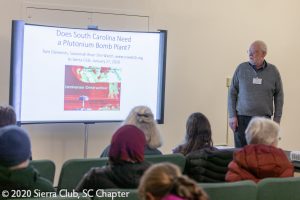 Columbia, South Carolina – A budget document released by the U.S. Department of Energy late on Wednesday, February 26 reveals that the agency has assumed a stunning projected cost of $4.6 billion to convert the poorly constructed plutonium fuel (MOX) building at the Savannah River Site into a Plutonium Bomb Plant (PBP). This amount of spending reveals that DOE and contractors aim to repurpose the failed MOX project into a perpetual money machine, according to the public interest group Savannah River Site Watch.
Columbia, South Carolina – A budget document released by the U.S. Department of Energy late on Wednesday, February 26 reveals that the agency has assumed a stunning projected cost of $4.6 billion to convert the poorly constructed plutonium fuel (MOX) building at the Savannah River Site into a Plutonium Bomb Plant (PBP). This amount of spending reveals that DOE and contractors aim to repurpose the failed MOX project into a perpetual money machine, according to the public interest group Savannah River Site Watch.
The budget document, the National Nuclear Security Administration’s funding request to Congress for Fiscal Year 2021, confirms that the agency is seeking $441 million for “repurposing” the MOX building into the unjustified Plutonium Bomb Plant.
US wants new nuclear weapons to counter Russia but says there is no arms race
Defense Department has pushed back on the notion that the US is engaging in an arms race or growing its nuclear arsenal, saying its latest moves are merely a response to Russian efforts
BY: RYAN BROWNE | cnn.com
Washington (CNN) During a visit to US Strategic Command last week, Secretary of Defense Mark Esper oversaw a “table top” war game exercise where Russian military forces used a “tactical” nuclear weapon against NATO territory during a conflict in Europe, prompting the US to launch a retaliatory nuclear strike.
“The scenario included a European contingency where you are conducting a war with Russia and Russia decides to use a low yield limited nuclear weapon against a site on NATO territory and then you go through the conversation that you would have with the Secretary of Defense and the President ultimately, to decide how to respond,” a senior Department of Defense official told reporters Friday.
Requested NNSA FY 2021 Funding for “Primary Capability Modernization”
(i.e. plutonium pits)
Bottom line: The National Nuclear Security Administration (NNSA) has requested $1.58 billion for expanded plutonium pit production in FY 2021 alone, when at least 15,000 pits are already stored at the Pantex Plant and independent experts have concluded that pits last at least a century (the average age now of pits in the active stockpile is less than 40 years). NNSA’s request is more than doubled from $712.4 million in FY 2020 for the comparable program “Plutonium Sustainment” that preceded Primary Capability Modernization.
No plutonium pit production is scheduled to maintain the safety and reliability of the existing stockpile. Instead, future pits will likely be heavily modified from tested designs for use in speculative new-design nuclear weapons. This could raise reliability issues and/or prompt the US to resume full-scale nuclear weapons testing.
Inside America’s newly revealed nuclear ballistic missile warhead of the future
“NNSA already has too much work on its plate to sustain. Accelerating development of yet another excessively ambitious program will only make that problem worse,” – Kingston Reif of the Arms Control Association
BY: AARON MEHTA | defensenews.com
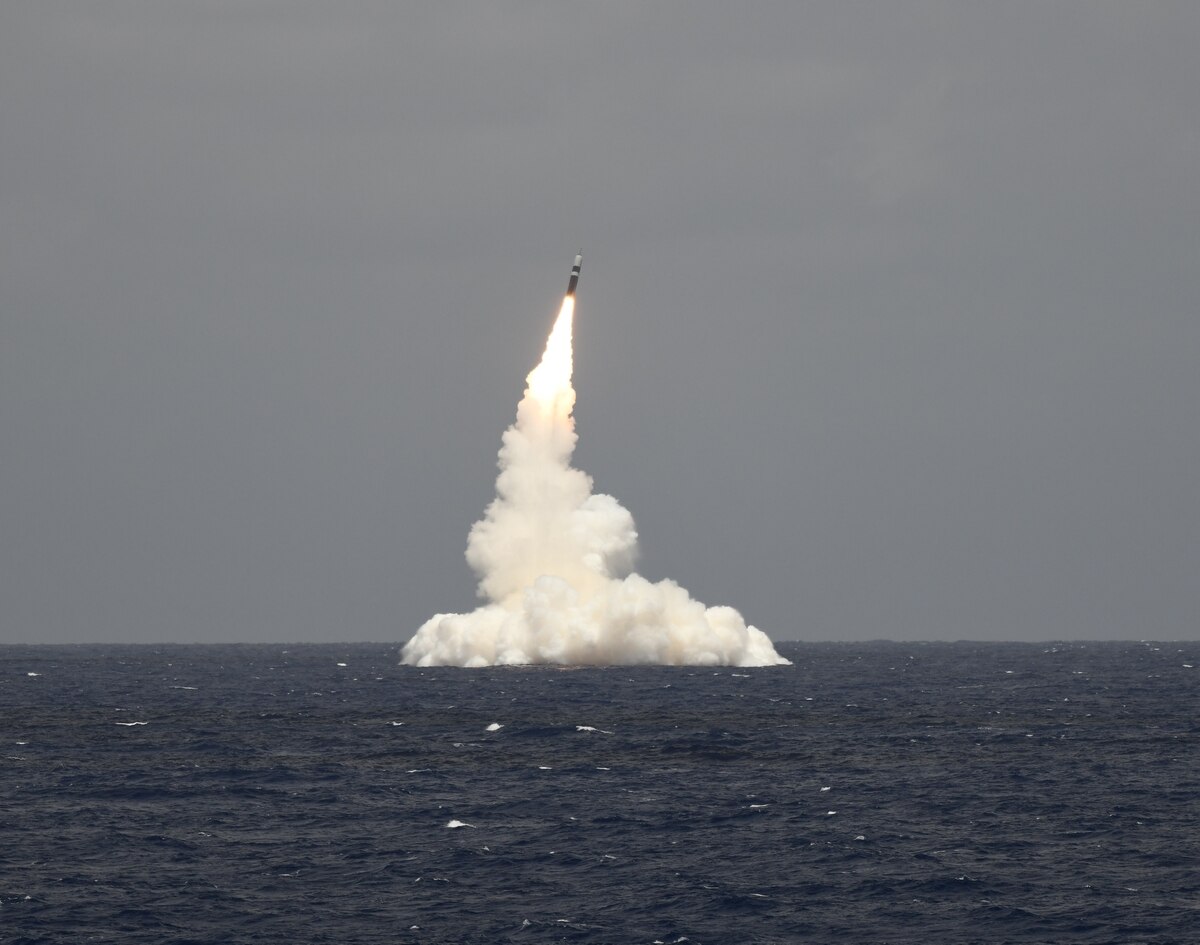
MINOT AIR FORCE BASE, N.D. — When the Trump administration’s budget request rolled out Feb. 10, eyebrows shot up within the nuclear community at the mention of a previously unknown warhead, listed in documents as the W93.
Now the Pentagon is revealing details about the weapon, what it will replace and when it might be deployed.
The labeling of the warhead as the W93 is important. Since the introduction of the W88 in the 1980s, all upgrades to warheads have been described as variants — for instance, the collapsing of several versions of the B61 gravity bomb into the B61-12. According to a senior defense official, the reason for the new designation comes from the reality that the warhead is largely a new design.
Nuclear News Archives – 2021
Nothing Found
It seems we can’t find what you’re looking for. Perhaps searching can help.

